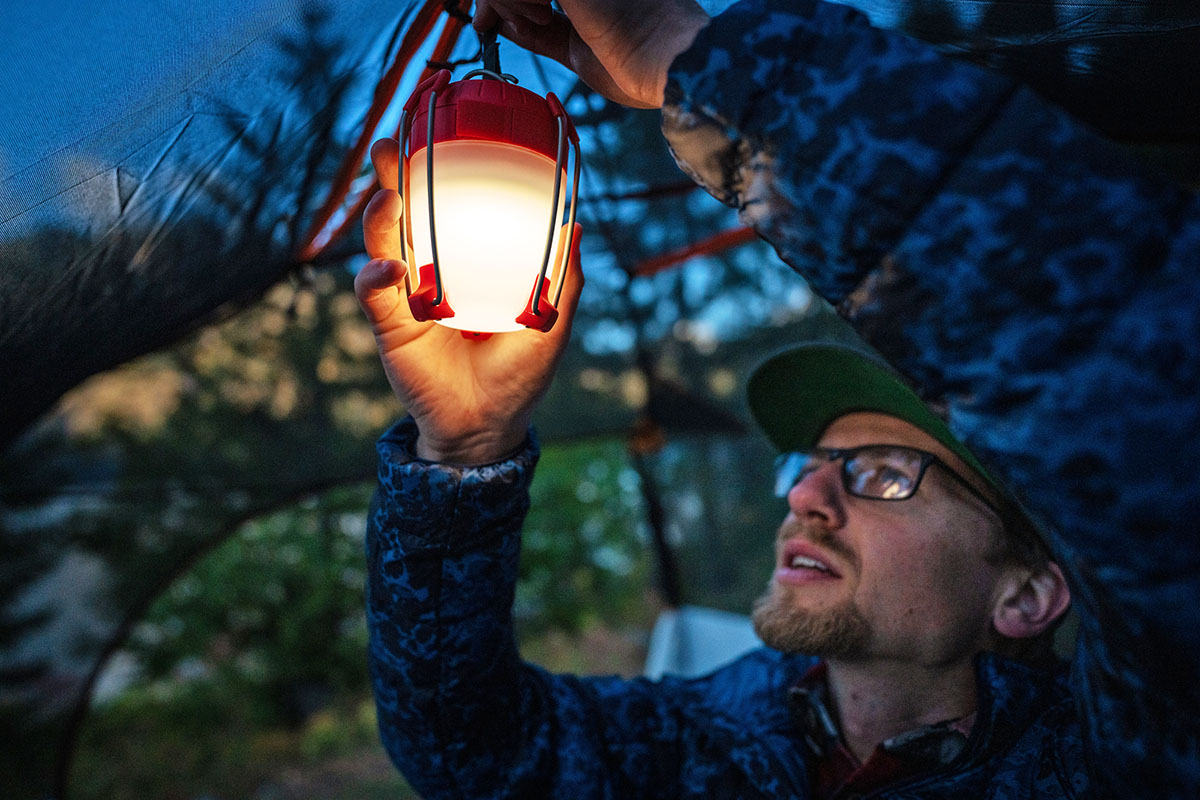
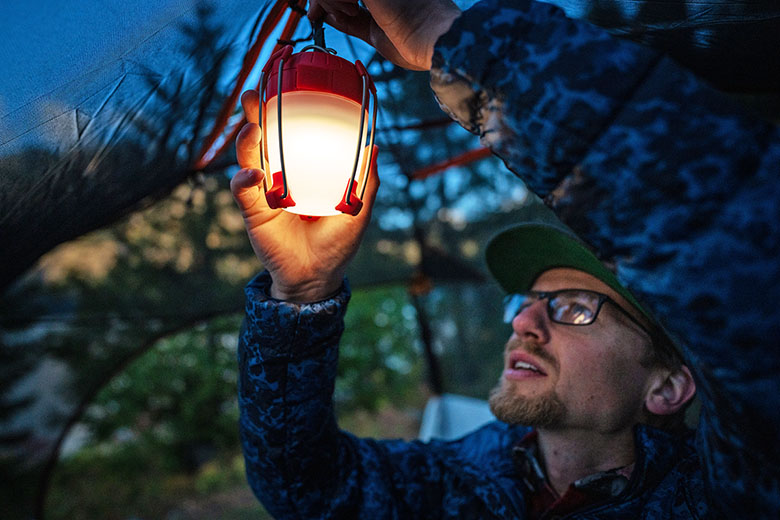
Switchback Travel (Jason Hummel)
Camping lanterns have come a long way since their inception. Nowadays, the market is flush with modern options that combine impressive brightness alongside fun features like multicolor lighting modes, USB ports for powering your electronics, and even solar panels for recharging your lamp in the field. We put several leading designs to the test at campsites across the country to bring you our 16 favorites below, which range from simple and collapsible models to tech-heavy offerings with strong outputs and Bluetooth compatibility. For more background information, check out our detailed comparison table and buying advice below the picks, along with details about our testing process.
Editor’s note: We updated this guide on May 29, 2025, to add BioLite’s Luci 44’ as our favorite string lights and revamp our coverage of several designs, including the BioLite Luci Inflatable Lantern (formerly the Mpowerd Luci). We also removed the discontinued Black Diamond Volt, moved Coast’s EAL22 up in our rankings, and swept the guide to ensure all information was accurate at the time of publishing.
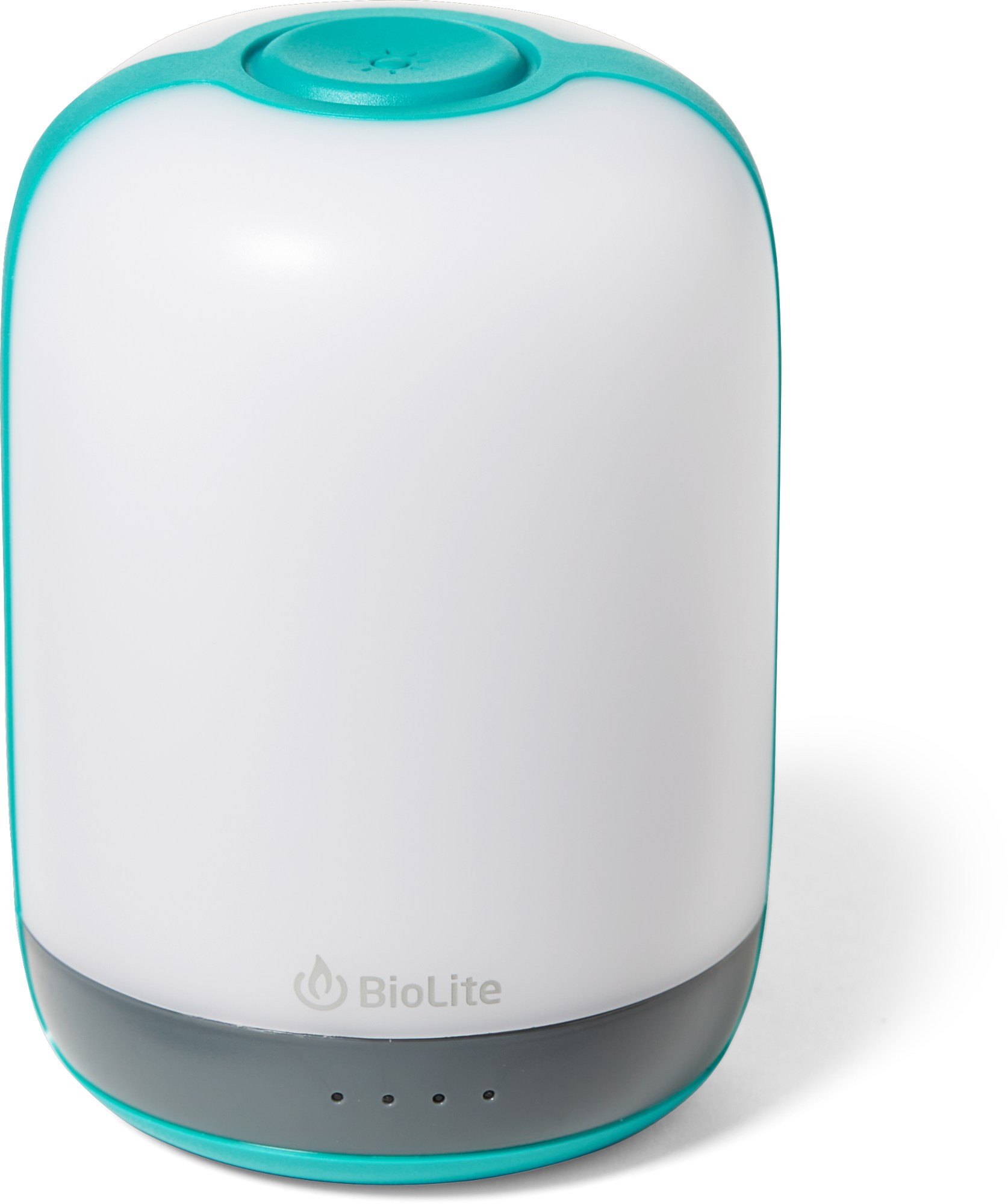 Weight: 13.8 oz.
Weight: 13.8 oz.
Max lumens: 500
Batteries: Rechargeable (USB)
What we like: Excellent combination of output, light modes, and tech features.
What we don’t: Expensive and could be a little more user-friendly.
New York-based BioLite is well known for their innovative wood-burning stoves, but their camping lantern collection is arguably just as well executed. Our favorite model in their lineup is the AlpenGlow 500, which combines an impressive 500-lumen max output with a nicely sorted feature set, including a built-in loop to hang the lantern at camp, integrated USB port to charge devices like your phone or tablet, and several color modes—from warm or cool white to a fun “fireworks” function. All told, the AlpenGlow is modern and sleek, thoughtfully built, and bright enough to serve as your only light at camp. In fact, we frequently use it at night in our truck camper, and it's been sufficiently powerful as our only source of light when cooking and cleaning up.
What are the downsides? The AlpenGlow 500 is on the pricey side at $80 and a little heavy and bulky compared to many of the picks below (it also doesn’t collapse down for stuffing in a full trunk or gear bin). BioLite does sell the cheaper and lighter AlpenGlow 250 ($60; 7.4 oz.) and AlpenGlow Mini ($40; 3.5 oz.), but we think most campers will find the added output of the 500 model worth the price and weight penalties. Unfortunately, none of the three options have a solar panel for recharging, but battery life is pretty impressive at 200 hours on low and 5 on high (the Mini, which we cover below, is 40 hours on low and 5 on high). A final nitpick is that it can be tough to find the exact setting you're looking for—cycling through the modes requires a combination of button-pushing and shaking the lantern. But the learning curve isn't too steep, and the BioLite offers a hard-to-beat mix of brightness, tech features, and overall quality, earning it our top spot for 2025.
See the BioLite AlpenGlow 500
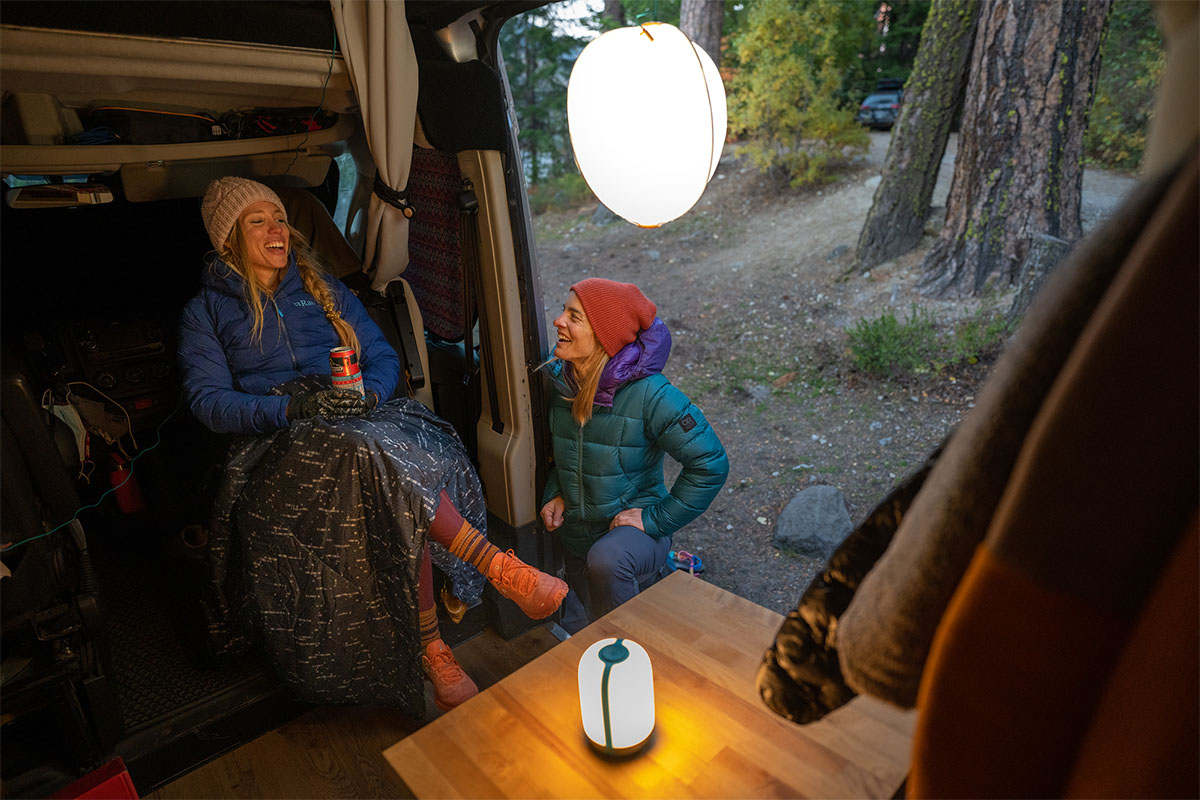
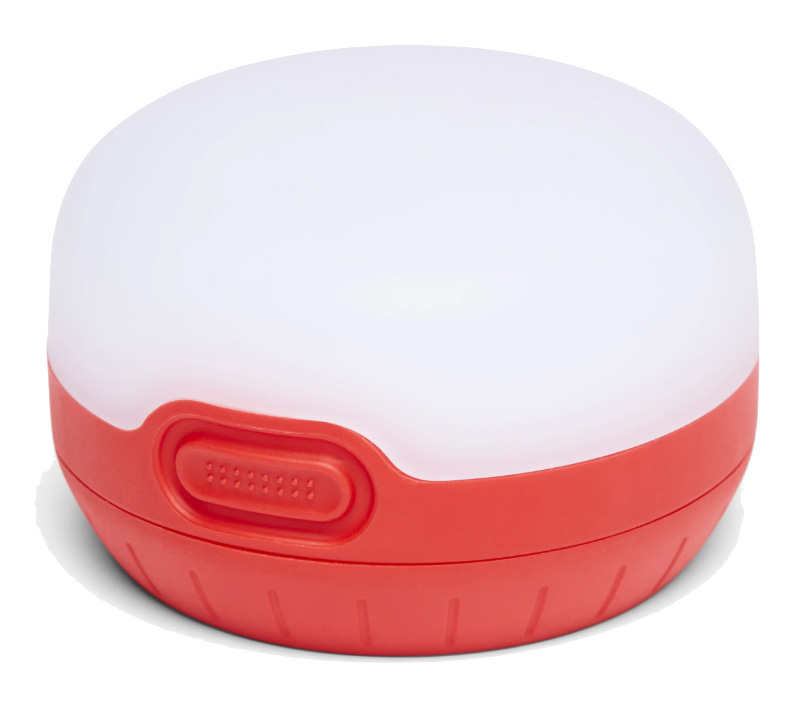 Weight: 4.2 oz.
Weight: 4.2 oz.
Max lumens: 200
Batteries: AAA (3); rechargeable battery sold separately
What we like: Light, compact, and very affordable.
What we don’t: Rechargeable battery sold separately; limited lighting modes.
The AlpenGlow 500 above is a premium and well-appointed lantern, but it's undeniably pricey at $80. Enter Black Diamond’s Moji, which costs just $30 but will get the job done for campers who care more about value and simplicity than lighting modes and charging capabilities. The design is decidedly basic, but Black Diamond made some notable improvements during their most recent update, including increasing the maximum brightness (from 100 to 200 lumens) and adding compatibility with their rechargeable battery (sold separately). Importantly, much of the winning formula remains, including the cheap price tag, lightweight build, and compact shape. Added up, the Moji is all most campers will need in a lantern. And because of the low heft and bulk, it can also pull double duty as a luxury item on backpacking adventures.
Black Diamond overhauled the Moji collection a few seasons back, and the standard model here is the cheapest and most basic in the collection. For $5 more, the Moji + has the same 200-lumen output but comes with attachment magnets and additional lighting functionality, including color settings and a fun “campfire” mode. Rounding out the lineup is the $45 Moji R + Lantern, which trades AAA batteries for a USB-rechargeable setup. We think the standard Moji balances its priorities the best and have been happy with its overall performance, but the entire family is undeniably well built, with many good reviews to its name.
See the Black Diamond Moji
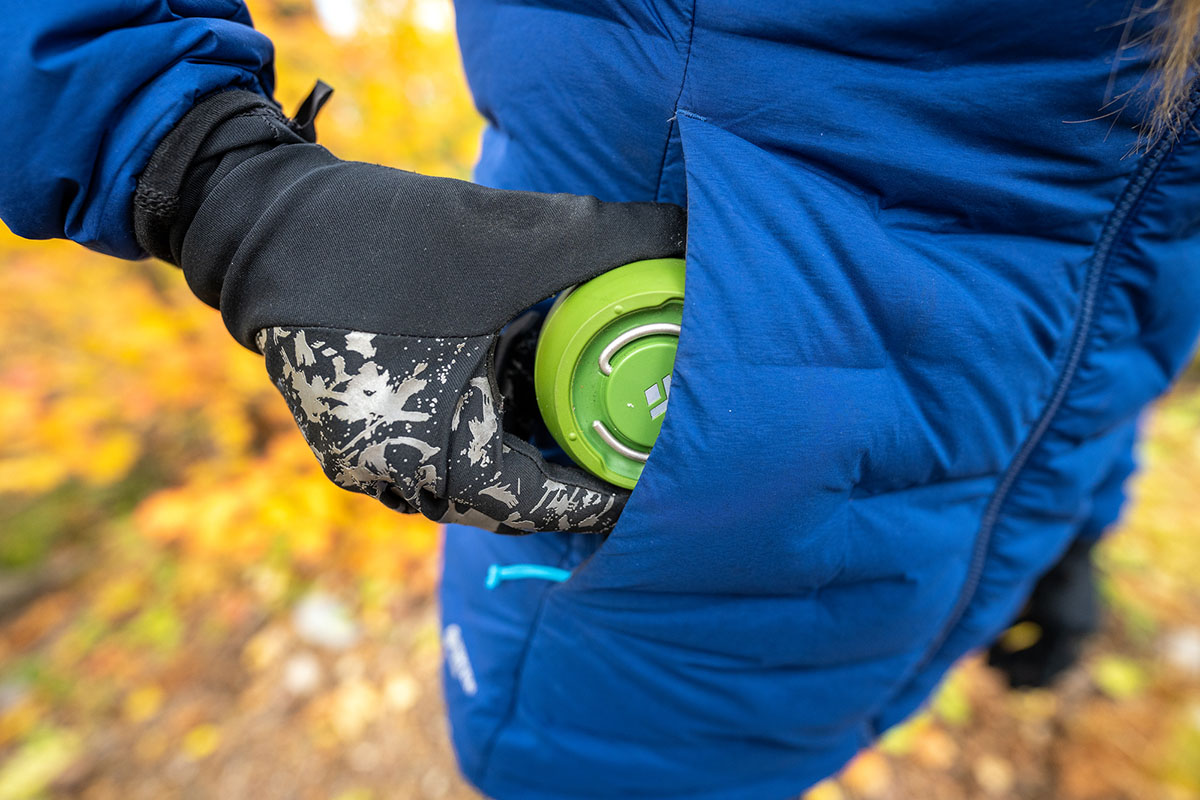
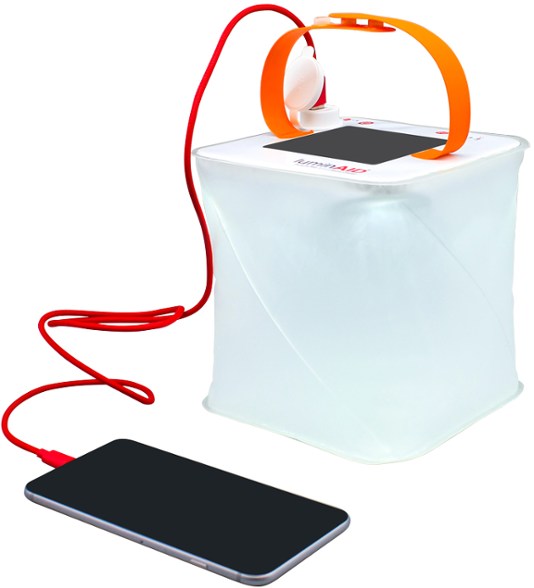 Weight: 12.5 oz.
Weight: 12.5 oz.
Max lumens: 150
Batteries: Rechargeable (USB and solar)
What we like: Integrated solar panel, USB port, and collapsible design are great for off-grid adventures.
What we don’t: Strap isn’t secure enough for attaching to a pack; device charging drains the battery quickly.
Camping lanterns certainly have come a long way over the past few decades, with modern designs boasting impressive integrated tech and charging capabilities. LuminAid’s PackLite Max 2-in-1 Power Lantern is a shining example of the ongoing innovation within the market: The lantern sports a built-in solar panel that recharges the battery when exposed to sunlight (you can also recharge it more quickly via the USB) and a single port for repowering electronics should you run out of juice while out in the wilderness. We also love the collapsible design, which inflates easily with a few breaths and folds down to around 1 inch when packed—a big plus for freeing up valuable space in a full trunk or garage.
Our biggest gripes with the LuminAid PackLite Max relate to its strap, which closes with two small buttons and isn’t the most secure for reliably attaching to the outside of a pack. We also found it too thick to hang from the webbing loops in our large camping tent (REI’s since-discontinued Grand Hut 6), so we ended up snapping it through the zipper pulls on the roof vents instead. This likely won’t be a dealbreaker for most, but it’s a notable downside if you like to suspend your light inside your tent or above camp. And in terms of brightness, the LuminAid is fairly middling with just 150 lumens of output, although we’ve found it to be plenty for illuminating a six-person tent or picnic table in full darkness. In the end, if you don’t mind the small concessions in strap security and brightness, the LuminAid is an excellent and highly compressible option for off-grid adventures when you have limited space and access to power. For a sizable boost in output (300 lumens) and run time (on all but the highest “turbo” setting), check out LuminAid’s similarly built Titan.
See the LuminAid PackLite Max 2-in-1
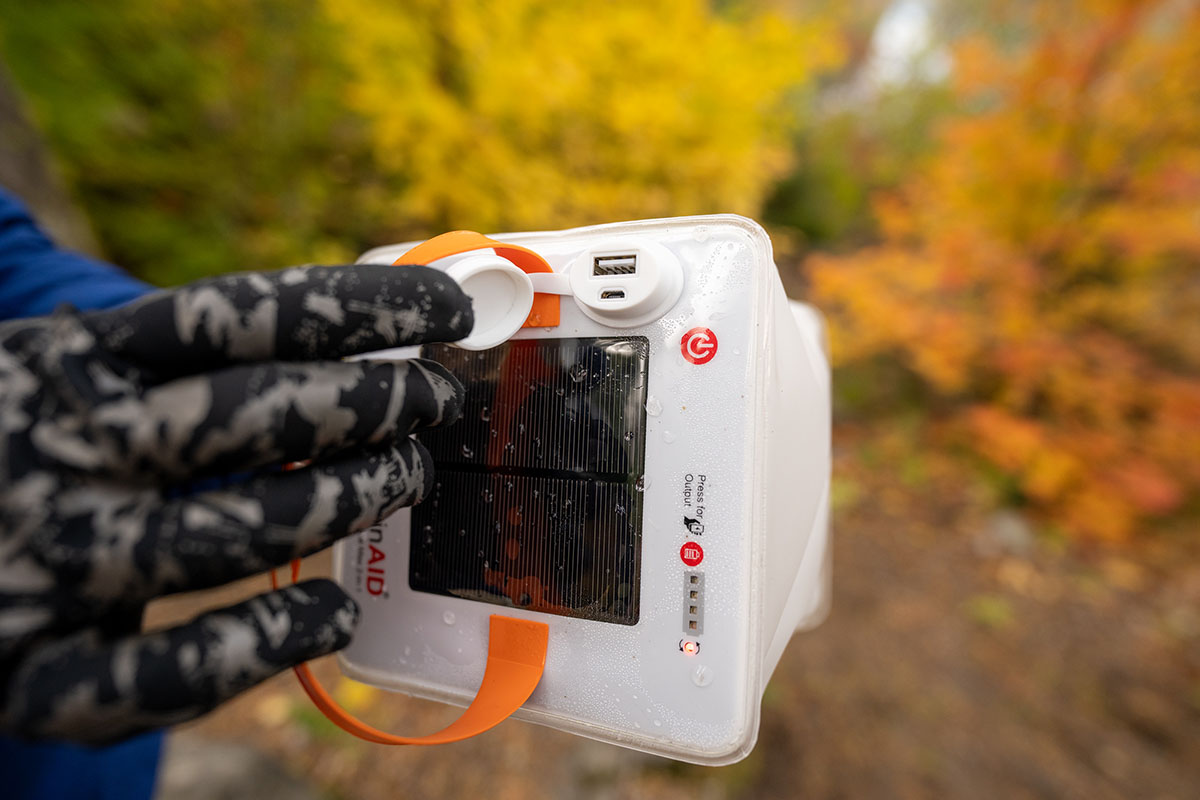
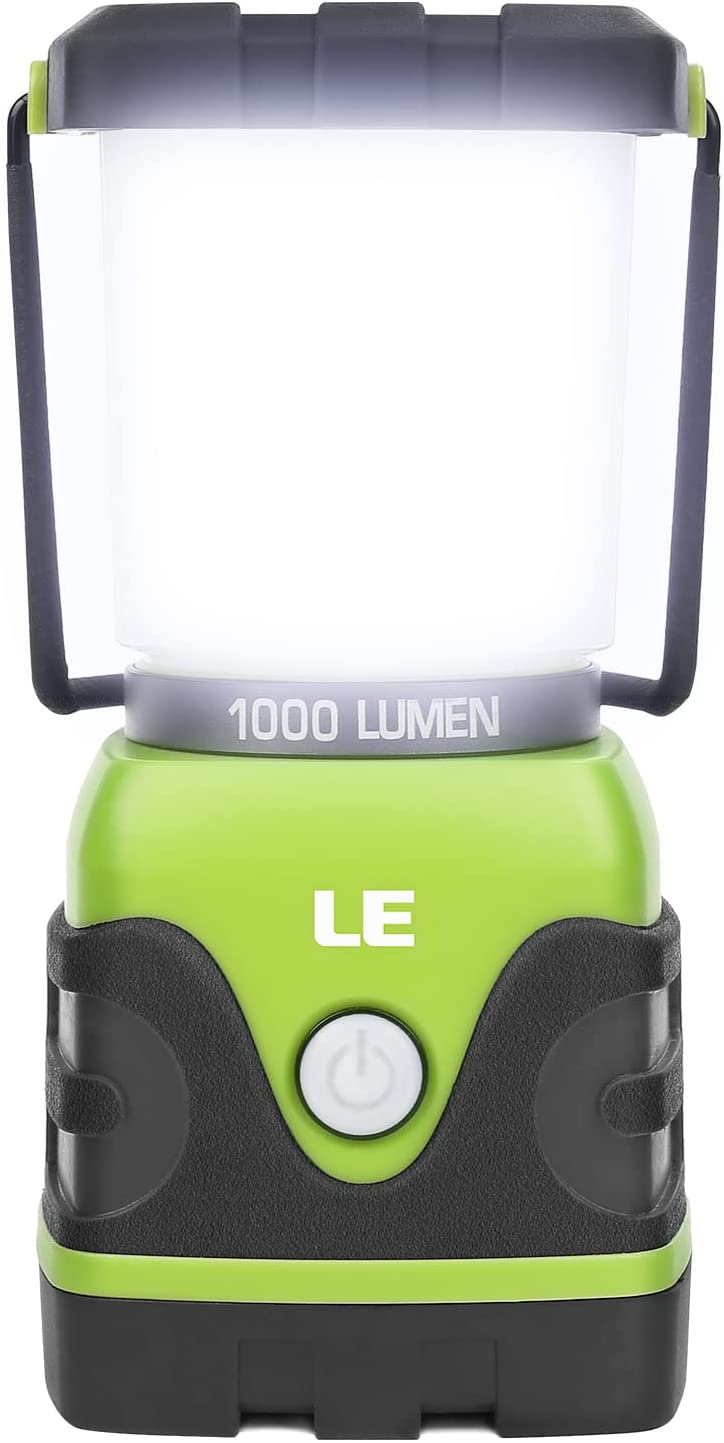 Weight: 1 lb. 0.5 oz.
Weight: 1 lb. 0.5 oz.
Max lumens: 1,000
Batteries: D Alkaline (3)
What we like: Exceptional output at a very affordable price point.
What we don’t: Fairly lacking in features and 1,000 lumens is overkill for most activities.
For those who prioritize maximum output over integrated tech features and packability, LE’s LED Camping Lantern is one of the brightest camping lanterns on the market with a whopping 1,000 lumens. This puts it in rarified air (along with Coast's 1,250-lumen EAL22 below) and translates to exceptional performance for illuminating an entire campsite, even in full darkness or inclement conditions. The light functionality is pretty basic—you get four modes, including daylight white, warm white, full brightness, and flashing—and the lantern can’t be recharged via USB. But at just $32 full MSRP (and even less on Amazon at the time of publishing), you’d be hard-pressed to find more output for less.
Unfortunately, however, the LE LED Camping Lantern doesn’t stand out in many other areas. In addition to the lack of color modes, the unit isn’t rechargeable and runs off of D Alkaline batteries, which are bulky and pricey compared to more commonly used AA or AAAs. It’s also on the heavier end at just over a pound and doesn’t collapse down, which is a potential downside on gear-intensive trips when space is at a premium. And unlike many of the picks above and below, the LE doesn’t have a port for charging electronics or even a battery life indicator. But for low-maintenance campers who don’t mind the simple and basic build, the combination of value pricing and exceptional brightness is hard to beat.
See the LE LED Camping Lantern
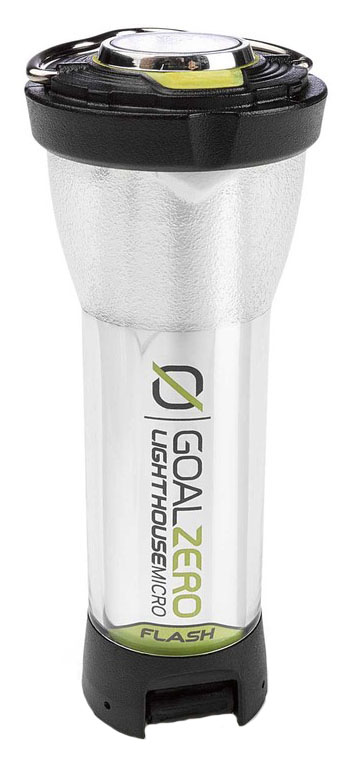 Weight: 2.4 oz.
Weight: 2.4 oz.
Max lumens: 150
Batteries: Rechargeable (USB)
What we like: Small, feathery light, and helpful flashlight beam.
What we don’t: Not a great primary option around camp.
At a scant 2.4 ounces, Goal Zero’s Lighthouse Micro Flash takes the ultralight crown for 2025. Right off the bat, we’ll note that the Micro Flash is unmistakably basic and lacking in features and brightness compared to many of the more premium (and pricier) picks above and below, but it packs a decent punch for its diminutive size. The 150-lumen output—while not particularly bright—is sufficient for illuminating a tent or seating area (including high and low settings and the ability to turn on only one side), and the integrated battery indicator makes it quick and easy to check how much juice is left. It’s a little less powerful in flashlight mode at 120 lumens max, but the functionality is very helpful for reading or venturing outside your tent in the middle of the night. And at just $25, the Goal Zero is an excellent value and a viable backup option to keep in your car for those just-in-case scenarios.
But unfortunately, the Lighthouse Micro Flash doesn’t stand out in many other areas. The feathery and compact build make it serviceable for weight-conscious backcountry missions (it's similar in size and shape to a jump rope handle), but most backpackers will already be carrying headlamps and therefore won’t find the Goal Zero all that useful. However, if you like the pocket-friendly size and shape, the Micro Flash is nevertheless well built for the price and weight, great for solo campers or bringing along for additional lighting at camp. For another ultralight (1.6 oz. without batteries) and compact option, Uco’s Leschi Lantern costs less at $20 but isn’t as bright and runs on AA batteries.
See the Goal Zero Lighthouse Micro Flash
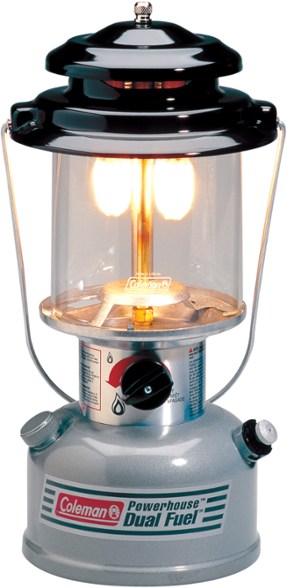 Weight: 4 lb. 10.4 oz.
Weight: 4 lb. 10.4 oz.
Max lumens: 800
Batteries: None (liquid fuel/gas)
What we like: A time-tested option for traditionalists and cold weather.
What we don’t: Heavy, bulky, and gas-powered design isn’t as convenient as batteries.
Coleman has been a big-time player in the camp lantern market for decades, and their Powerhouse Dual Fuel Lantern pays tribute to designs of old. Rather than batteries, the Powerhouse runs off of liquid fuel or unleaded gasoline, which is great for cold-weather adventures that can drain standard batteries quickly. For reference, the lantern lasts up to 5 hours on high or 20 hours on low using either fuel. Just as importantly, it features a very bright 800-lumen lamp that puts out even, diffused light (the control knob allows you to effectively dial in the intensity). All in all, it’s a highly reliable and time-tested option for winter campers, survivalists, and those spending time at higher altitudes.
What are the downsides of the Coleman’s gas-powered build? The most obvious is the lack of convenience: While many of the picks on our list can be recharged in the field via USB or by swapping batteries, you’ll need to plan ahead with the Coleman and bring along extra fuel or gas on extended outings. The unit itself is also undeniably heavy and bulky at nearly 5 pounds. And at $110, you’re paying a pretty steep premium for an otherwise low-tech and dated-looking design. In the end, there’s no denying the reliability and impressive cold-weather performance, but we think most recreational campers will be happier with a sleeker and more modern option like BioLite’s AlpenGlow 500 above or Goal Zero’s Lighthouse 600 below. Alternatively, Primus’ Micron Lantern is cheaper at $60, much lighter (4.2 oz.) and more compact, and attaches directly to a gas canister—great for backpackers who are already hauling in fuel.
See the Coleman Powerhouse Dual Fuel Lantern
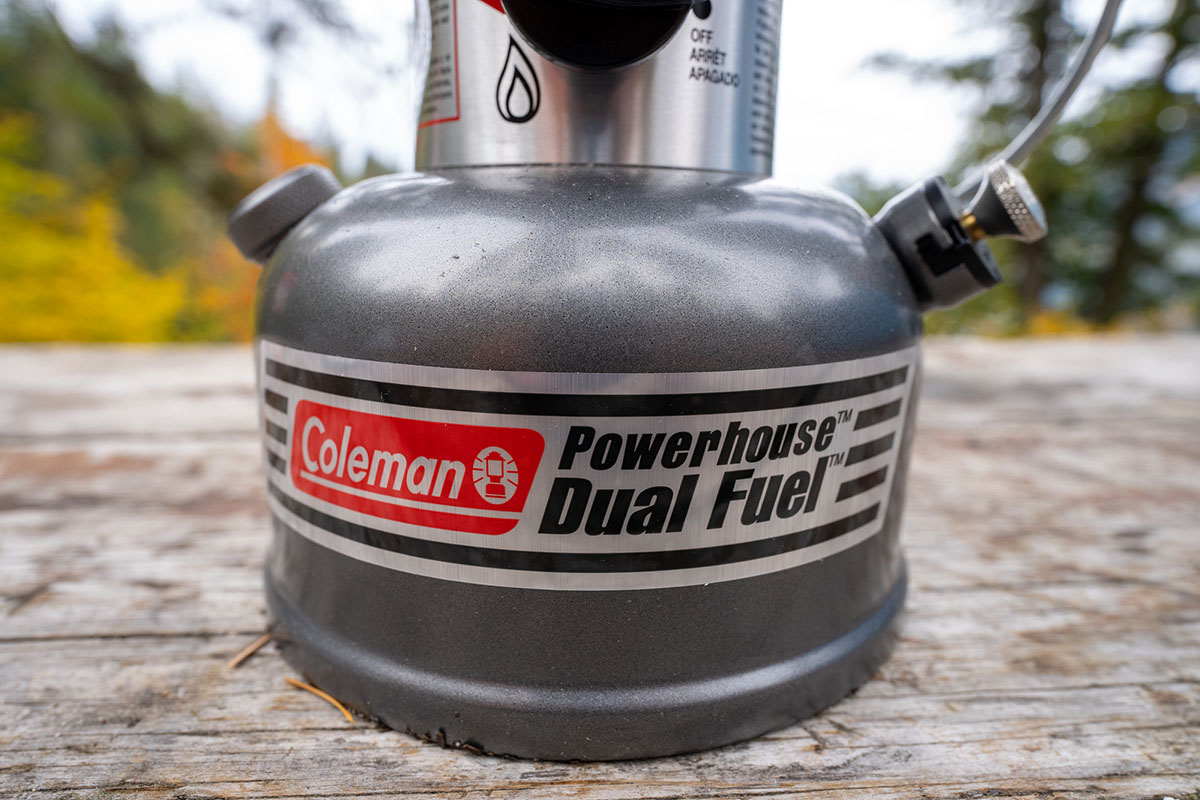
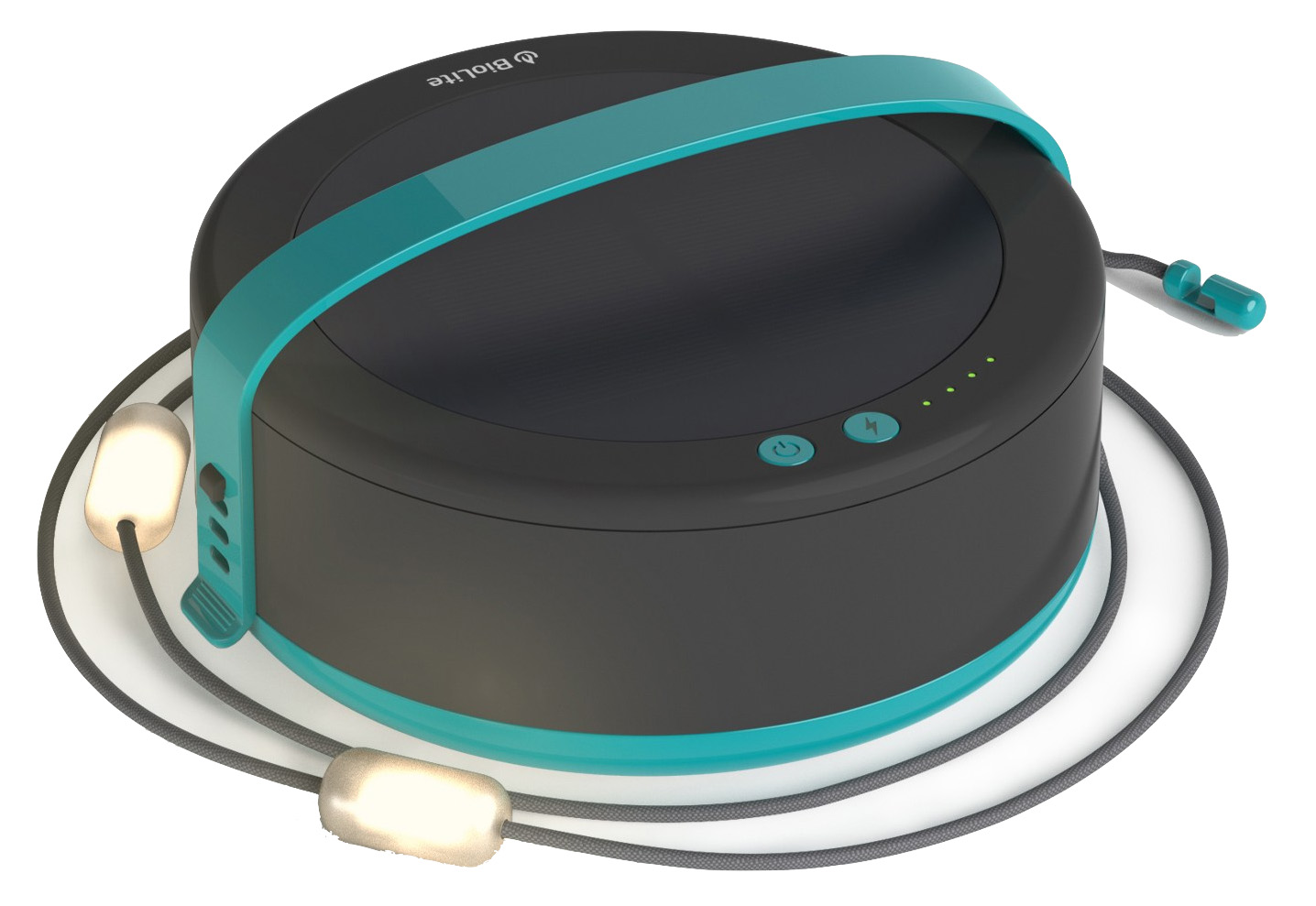 Weight: 1 lb. 11.5 oz.
Weight: 1 lb. 11.5 oz.
Max lumens: 140
Batteries: Rechargeable (USB and solar)
What we like: A fun alternative to traditional lanterns for great campsite ambiance.
What we don’t: Lacking in versatility.
Most campers stick with traditional lanterns for illumination, but if you’re looking for a cozy and unique ambiance, string lights are a fun alternative. BioLite’s Luci 44’ Solar is our favorite outdoor-ready design, combining many of the features we love in a quality lantern with a 44-foot nylon braided cord comprised of 20 lights that can be strung between trees, tents, or other structures. Like the LuminAid PackLite Max above, the Luci Solar also sports an integrated solar panel and USB port for mobile device charging, as well as a handy battery life indicator. If you need to plug the device in to charge or reposition it so that it’s in direct sunlight, the charging unit can be detached from the string setup, allowing you to leave the lights up. Those are some serious upgrades from standard, plug-in string lights.
What do you sacrifice by opting for string lights like the Luci Solar over a more standard lantern? The biggest concession is versatility: While the lanterns above and below can be set up pretty much anywhere in a matter of seconds, the Luci lights will require some time and effort to hang. And if you’re camping in an exposed area without trees or other places to readily secure them, this might take some serious creativity and ingenuity. But these issues are par for the course among string lights, and they’re an undeniably fun and creative alternative for vanlifers, backyard gatherings, and group camping trips. We also like BioLite’s Luci Site Lights, which comprise six “nodes” that can be strung together or separated for clipping to a pack, hanging from a guyline, or snapping into the included tent stakes to minimize trip hazards in the dark.
See the BioLite Luci 44' Solar String Lights
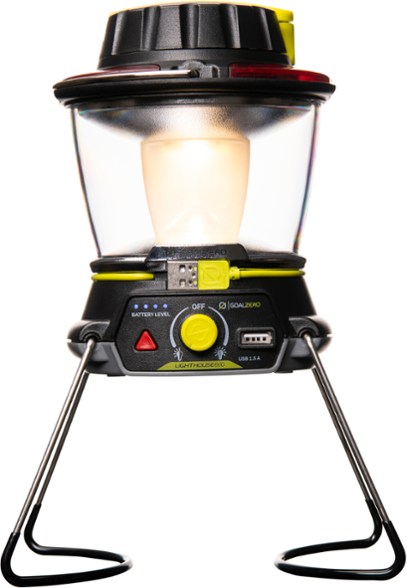 Weight: 1 lb. 1.6 oz.
Weight: 1 lb. 1.6 oz.
Max lumens: 600
Batteries: Rechargeable (USB, solar, and hand crank)
What we like: A bright and thoughtfully built option with phone-charging capabilities.
What we don’t: A little heavy and pricey; solar panel sold separately.
For a modern take on the traditional camp lantern, Goal Zero’s Lighthouse 600 is one of the most popular designs on the market, and for good reason. The 600-lumen max output is impressively bright and provides nice, even lighting all around, or you can adjust the dial to save power by utilizing only half of the lantern. Further, the collapsible legs and built-in handle make setup and storage a breeze, and you get an integrated charging port at the front for powering a phone or other electronic device. Finally, in addition to being able to recharge the battery via USB or solar power, the Lighthouse also sports a hand crank for manually juicing it up—an excellent and very helpful addition for adventures that take you far off the grid (1 minute of cranking translates to about 10 mins. of light on low).
As we touched on above, the Lighthouse can be recharged via solar power, but it unfortunately doesn’t come with an integrated panel like LuminAid’s PackLite Max above, and run time is surprisingly short at just 2.5 hours on high. For reference, Goal Zero recommends pairing the lantern with their Nomad 10 panel, which will run you $100 (in addition to the already-steep $70 investment). Additionally, the Lighthouse is on the heavier and bulkier end of the spectrum at just over a pound, making it far less appealing for hanging in a tent (it’s a fair amount of weight to suspend from a thin fabric loop). You can shave off around 5 ounces with the $50 Lighthouse Core model, although it’s dimmer (430 lumens) and lacks the 600’s collapsible legs, which are great for setting the lantern on a table for food prep or illuminating an area at camp. All told, the Lighthouse 600 is an impressively capable and nicely outfitted pick for remote trips—especially if you already own a Goal Zero solar panel.
See the Goal Zero Lighthouse 600
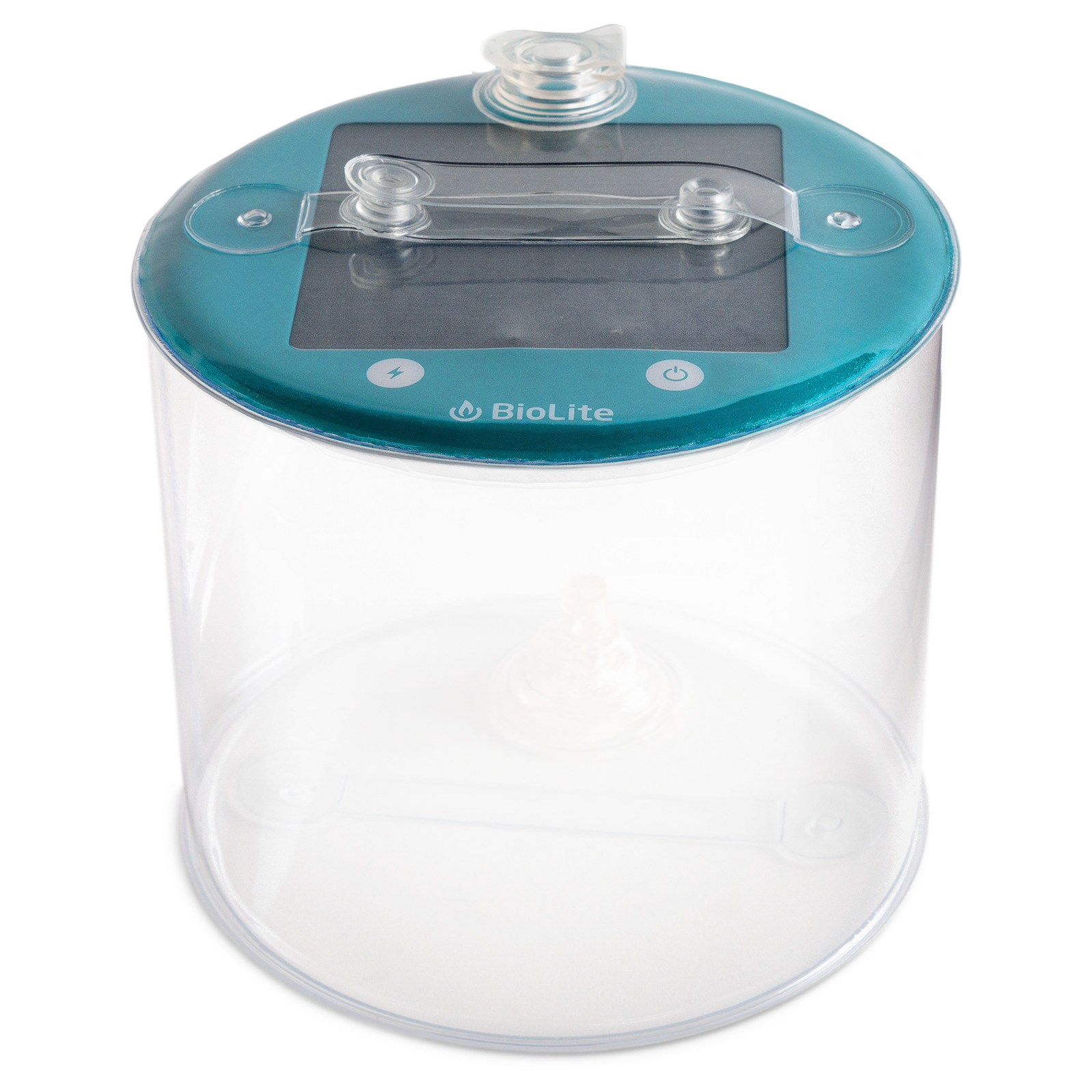 Weight: 4.4 oz.
Weight: 4.4 oz.
Max lumens: 75
Batteries: Rechargeable (USB and solar)
What we like: A light and collapsible solar-powered lantern for just $30.
What we don’t: Most campers will want something brighter.
From the same collection as BioLite’s Luci Solar String Lights above, the Luci Original Solar Inflatable Lantern is another well-executed design with a nice array of functional features. The rechargeable battery lasts up to 24 hours on a single charge with a three-dot indicator to monitor juice, or you can position the lamp in direct sunlight and utilize the solar panel. We also appreciate the light and collapsible build, which measures around 1 inch thick when deflated and checks in just 4.4 ounces—great for throwing in a duffel or full bin of camping gear. And priced at just $30, the Luci Original is one of the cheapest solar panel-equipped options on our list (behind the Goal Zero Crush below) and an excellent value.
What do you sacrifice by saving with the Luci Original Solar Inflatable Lantern? Unlike most other designs with solar panels, the BioLite doesn’t have a port for charging electronics, which is a downside for extended, remote outings (you’ll likely need to bring along a separate bank to recharge your phone). And like the LuminAid PackLite Max above, the Luci's strap is underbuilt for attaching to a pack and was too thick for hanging in our camping tent. Finally, the 75-lumen output—while serviceable for general camp use—lacks the brightness of similarly equipped models like the LuminAid (150 lumens) and Goal Zero Lighthouse (600 lumens) above. But the Luci Original is the cheapest of the bunch by a sizable margin, which could be the deciding factor for many. If you’re looking for something a little different, the collection also includes a couple of Charge variations that come with a USB port for device charging, as well as Warm and Color options that cost the same as the Clear model here but with different lighting modes.
See the BioLite Luci Original Solar Inflatable Lantern
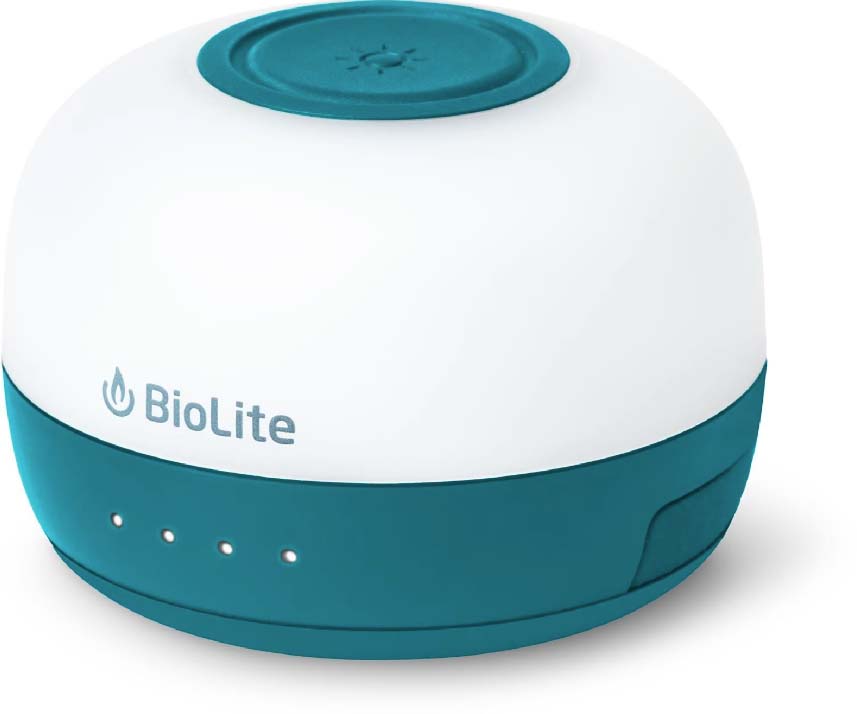 Weight: 3.5 oz.
Weight: 3.5 oz.
Max lumens: 150
Batteries: Rechargeable (USB)
What we like: Packs a lot of punch for its diminutive size.
What we don’t: The Black Diamond Moji above is cheaper and brighter.
BioLite’s AlpenGlow Mini is the latest addition to the AlpenGlow collection and packs a surprisingly strong punch for its diminutive size. For $30 less than the top-ranked AlpenGlow 500, the Mini retains a lot of what we love about its bigger sibling, including a nice assortment of light modes—from multicolor “party” mode to warm white—an intuitive power meter display and the same run time at max tilt (5 hours). We also love the bungee strap on the bottom, which makes it easy to suspend from a tree branch or tent webbing loop. And, at just 3.5 ounces and around 3 by 2 inches, the BioLite is plenty light to warrant bringing into the backcountry and compact enough to fit in the palm of your hand.
The BioLite AlpenGlow Mini looks and feels a lot like Black Diamond’s Moji above. Comparing the two, the Moji is $20 cheaper and slightly more powerful with 200 lumens of output. However, the AlpenGlow is slightly lighter (by 0.7 oz.), comes with a rechargeable battery (the Moji’s is sold separately), and offers far more light functions (the BD only has dimming and strobe modes in addition to solid white). The BioLite’s bungee cord also makes it much easier to suspend above a picnic table or inside a tent than the Moji’s double-hook metal loop. Whether or not those upgrades are worth the additional cash is up to you, but we consider the AlpenGlow Mini a very well-sorted and competitive addition to BioLite’s lineup.
See the BioLite AlpenGlow Mini
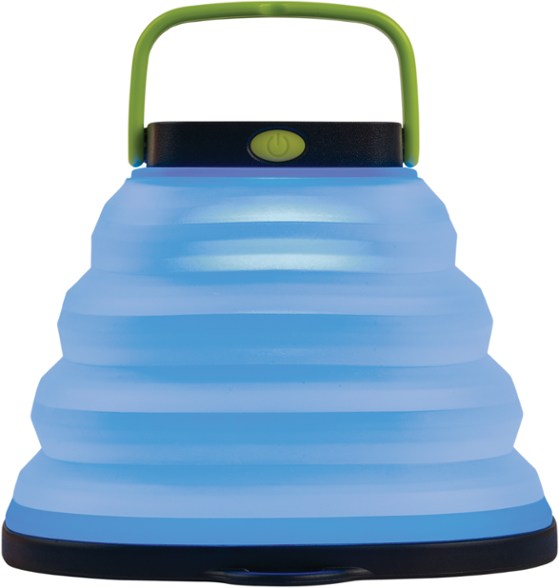 Weight: 3.2 oz.
Weight: 3.2 oz.
Max lumens: 60
Batteries: Rechargeable (USB and solar)
What we like: Built-in solar panel, eight color modes, and device-charging capabilities at a budget-friendly price.
What we don’t: Middling brightness and takes a long time to charge in the sun.
Like BioLite’s Luci Original Inflatable Lantern above, Goal Zero’s Crush Light Chroma slots in as a light and packable design at a great price. For a wallet-friendly $35, the Goal Zero combines a feathery build (around 1 oz. lighter than the Luci) with an integrated solar panel for recharging the lamp in the backcountry. Many will also like the addition of a USB port for charging electronics like a phone or camera, as well as the eight color modes and “multicolor fade” function for creating more of a playful atmosphere at camp. All told, it’s another well-sorted design from the innovative Utah-based brand.
That said, despite the advantages in light functionality and weight, the Goal Zero falls short of the BioLite Luci in a couple key areas. First, the Crush Light has a middling 60-lumen max output, which is the dimmest on our list (the Luci is 75 lumens) and lacks the brightness needed for illuminating an entire campsite in full darkness. Battery life is another drawback: The Goal Zero lasts just 3 hours on high, while the Luci offers double the runtime (and neither is a standout compared to most other picks here). But if you’re on a budget and anticipate using the color modes and USB port, the Crush Light Chroma is a super compact lantern at a great value. For $5 less, Goal Zero also makes the standard Crush Light, which lacks the device-charging port and color modes of the Chroma but is otherwise very similar in terms of overall performance.
See the Goal Zero Crush Chroma Lantern
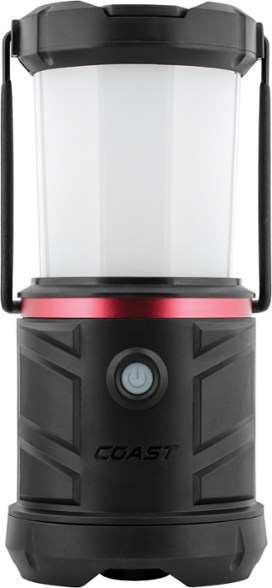 Weight: 2 lb. 8.6 oz.
Weight: 2 lb. 8.6 oz.
Max lumens: 1,250
Batteries: D Alkaline (3); rechargeable battery sold separately
What we like: The brightest lantern on our list and also one of the cheapest.
What we don’t: Heavier than the LE LED above without enough to show for it.
If you’re looking to maximize bang for your buck, look no further than Coast's EAL22. With a whopping 1,250 lumens at max output, the Coast is the brightest and most powerful lantern on our list while coming in at a remarkably low price point. Battery life is respectable, too: The EAL22 lasts around 10 hours on high and up to 263 hours on the lowest 77-lumen setting, which stacks up pretty competitively to the 1,000-lumen LE LED above (12 hours on high). And like most of Coast's products, the EAL22 is well suited for rough use with good water resistance and a sturdy nylon body that won’t crack if you drop it (from a reasonable height, of course). The rest of the build is pretty basic, although you do get carabiners on the top and bottom to suspend the lantern from a branch or inside your tent. Bonus: The diffuser twists off to provide a wider beam, which is great for illuminating a work space at night.
What’s not to like about the Coast EAL22? First is weight: At 2 pounds 8.6 ounces, it’s noticeably heavier than the 1-pound-0.5-ounce LE LED above with only a modest bump in output. The Coast does offer more lighting modes—including warm low, medium, high, red, and flashing red—and the ability to recharge via USB, although you’ll have to purchase the brand’s Zithion-X battery separately for an additional $40. And as we touched on above, the output is overkill for most uses—casual campers can save $10 and around 2 pounds with the 415-lumen EAL13 version. To be sure, the EAL22 has appeal for emergency use at home or camp, sorting through gear in the dark, or whipping up a late-night meal, and it’s a solid value at just $40. But most campers (ourselves included) will be willing to trade some brightness for modern features like device-charging capabilities (you'll need to upgrade to the separate battery for this) and built-in solar panels, pushing the EAL22 slightly down our rankings.
See the Coast EAL22
 Weight: 9.9 oz.
Weight: 9.9 oz.
Max lumens: 750
Batteries: Rechargeable (USB)
What we like: Great variety of light functions and mounting options.
What we don’t: A little pricey and complex to operate.
Germany-based Ledlenser is credited with producing one of the first LED-equipped flashlights in the early 2000s, and their ML6 lantern is a prime example of the company’s ongoing focus on innovation and tech. What immediately stands out is the extensive array of light functions and mounting options. In addition to its excellent 750-lumen output at full tilt, the lantern also features a battery-saving low-power mode (great for reading in your tent at night), “boost” function for max power in short spurts, interval-based blink and pulse settings, and strobing capability for unexpected wildlife encounters. There’s even a distress signal that emits SOS in Morse code. And for securing the lantern, the Ledlenser sports a rubber hook at the top for hanging, a built-in magnet for mounting to a metal surface, and a removable stand for propping on a table or flat ground.
In addition to its versatile design and multitude of light modes, Ledlenser also incorporated a few thoughtful touches, including fluorescent detailing to find the lantern in the dark, a low-battery warning and charge indicator, and a lock to prevent turning it on accidentally. However, all these features do come with downsides in terms of cost and complexity: The ML6 is pricey at $90 (there is a cheaper but less powerful ML4 version available) and not as user-friendly as simpler options from BioLite and Black Diamond above. In other words, it will likely require a bit of a learning curve to maximize the functionality, which won’t be a problem for tech-savvy campers but could pose an issue for those just wanting the basics. To adjust the settings more quickly and easily, Ledlenser does make an upgraded “Connect” version, which allows you to control the lantern via your phone (it’s Bluetooth-compatible) or the included remote control.
See the Ledlenser ML6
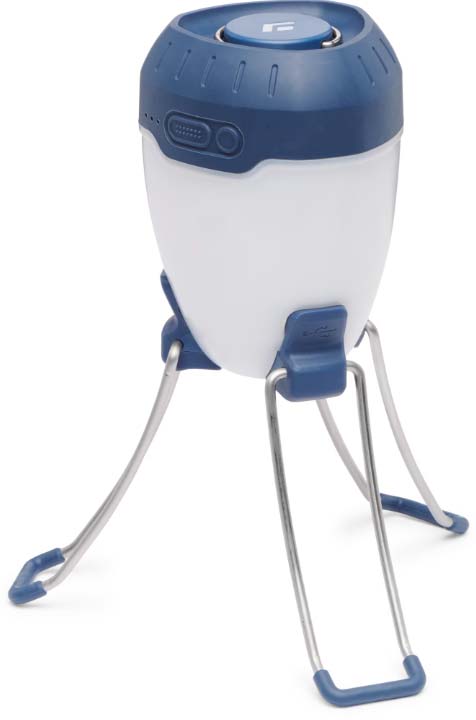 Weight: 1 lb. 1.9 oz.
Weight: 1 lb. 1.9 oz.
Max lumens: 650
Batteries: Rechargeable (USB)
What we like: A substantial upgrade over Black Diamond’s similarly built Apollo.
What we don’t: Can’t be charged off of AA batteries in a pinch; middling run time at max tilt.
The final Black Diamond lantern to make our list is their Orbiter 650, which is an upgraded take on their longstanding Apollo. Like their Moji above, the Orbiter features the frosted globe that we love for providing a diffused, even light around camp, along with a user-friendly build including an easy-to-read power meter display and intuitive settings adjustments. But the real highlight is the practical folding/hanging design, which includes a double-hook metal loop at the top for securing to a branch or tent webbing loop and folding legs underneath for standing the unit on a picnic table or rock. Combined with a very respectable 650-lumen max output, rechargeable battery, and USB port, the Orbiter is a well-appointed and highly versatile option.
As we alluded to above, the Orbiter bears a remarkably strong resemblance to Black Diamond’s own Apollo lantern. In parsing out the differences, the Orbiter is significantly brighter (the Apollo maxes out at 250 lumens) and boasts more light functions, including several color settings and a fun “campfire” mode (the Apollo only has strobe and dimming functions). However, the Orbiter is heavier by nearly 6 ounces, and run time isn’t all that impressive at just 4 hours on high. It also can't run off of AA batteries like the Apollo, which is a nice alternative for off-grid adventures when you don’t have access to a power source. But that’s realistically not a must-have feature for most campers, and we consider the upgrades in output and light modes worth the trade-offs. The Orbiter is also available in a 450-lumen version for $20 less, although it lacks the 650's deployable legs and has an even shorter run time (2 hours on high).
See the Black Diamond Orbiter 650
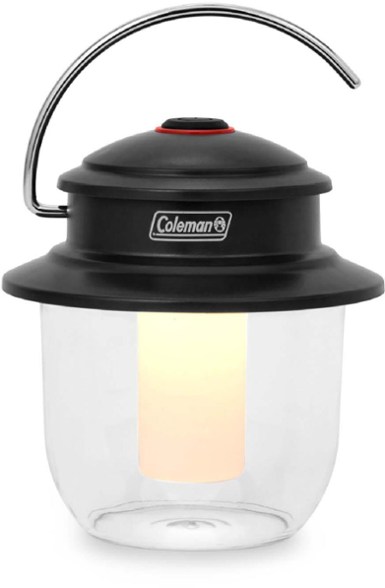 Weight: 12.8 oz.
Weight: 12.8 oz.
Max lumens: 400
Batteries: Rechargeable (USB)
What we like: Decent brightness and a rechargeable battery in a light and streamlined package.
What we don’t: Short run time and not as well sorted as many of the picks above.
Coleman’s gas-powered Powerhouse above is a viable option for traditionalists and cold-weather campers, but their Classic Recharge 400 is a cheaper and more modern take. For $59 full price and often less on Amazon, the Classic offers a respectable 400-lumen max output in a lightweight and streamlined package. For reference, at 12.8 ounces, it’s nearly 4 pounds lighter than the Powerhouse and much easier to hang from a tree branch or tent loop. You also get a built-in lithium-ion battery with intuitive indicators that let you know when it’s time to recharge. And a small but thoughtful touch is the clear bottom, which allows for even lighting around the entire lantern, whether it’s set on a picnic table or suspended above you (most competitors have solid bases that restrict light at the bottom). You do need to take a little extra care to avoid damage to the light, but it's a nice feature nonetheless.
All told, the Coleman 400 is decently bright for its size and a good value to boot. However, Coleman still has a ways to go in matching innovators like BioLite, Goal Zero, and others. The Classic doesn’t have an integrated solar panel for off-grid charging, lacks a port for plugging in electronics, and doesn’t compress down for stowing in a trunk or gear bin. Finally, run time is unimpressive at just 5 hours on high and 40 hours on low. For about half the price, LE’s LED Camping Lantern above lasts longer (12 hours at the max 1,000-lumen setting and 200+ hours on low) for around an ounce more, although it’s similarly bereft of modern features. Overall, the Classic is a solid effort from the camping giant and also sold in a more powerful 800-lumen version that comes with a charging port, but the 400’s lack of integrated tech is a notable downside in today’s market.
See the Coleman Classic Recharge 400
| Lantern | Price | Weight | Max Lumens | Batteries | Run Time (High) | USB Port |
|---|---|---|---|---|---|---|
| BioLite AlpenGlow 500 | $80 | 13.8 oz. | 500 | Rechargeable (USB) | 5 hours | Yes |
| Black Diamond Moji | $30 | 4.2 oz. | 200 | AAA (3) | 5.5 hours | No |
| LuminAid PackLite Max | $60 | 12.5 oz. | 150 | Rechargeable (USB/solar) | 3-5 hours | Yes |
| LE LED Camping Lantern | $32 | 1 lb. 0.5 oz. | 1,000 | D Alkaline (3) | 12 hours | No |
| Goal Zero Lighthouse Micro | $25 | 2.4 oz. | 150 | Rechargeable (USB) | 7 hours | No |
| Coleman Powerhouse | $110 | 4 lb. 10.4 oz. | 800 | None (liquid fuel/gas) | 5 hours | No |
| BioLite Luci 44’ String Lights | $100 | 1 lb. 11.5 oz. | 140 | Rechargeable (USB/solar) | 8 hours | Yes |
| Goal Zero Lighthouse 600 | $80 | 1 lb. 1.6 oz. | 600 | Rechargeable (USB/solar/crank) | 2.5 hours | Yes |
| BioLite Luci Original Solar | $30 | 4.4 oz. | 75 | Rechargeable (USB/solar) | 6 hours | No |
| BioLite AlpenGlow Mini | $50 | 3.5 oz. | 150 | Rechargeable (USB) | 5 hours | No |
| Goal Zero Crush Chroma | $35 | 3.2 oz. | 60 | Rechargeable (USB/solar) | 3 hours | Yes |
| Coast EAL22 | $40 | 2 lb. 8.6 oz. | 1,250 | D Alkaline (3) | 10 hours | No |
| Ledlenser ML6 | $90 | 9.9 oz. | 750 | Rechargeable (USB) | 4 hours | Yes |
| Black Diamond Orbiter 650 | $70 | 1 lb. 1.9 oz. | 650 | Rechargeable (USB) | 4 hours | Yes |
| Coleman Classic 400 | $59 | 12.8 oz. | 400 | Rechargeable (USB) | 5 hours | No |
Camping is all about maximizing comfort in the outdoors, and even small accessories like a lantern can go a long way toward creating a cozy, home-in-the-woods experience. Managing editor Sarah Nelson kicked off this guide in early 2022, putting several leading designs to the test to narrow in on 18 favorites. Splitting her time between Lake Tahoe and traveling in a truck camper, Sarah has tested camping gear all over the West—from remote campsites deep in the Cascades to public campgrounds at national parks—and loves designs that are both space- and energy-efficient.
Our current lineup of 15 camping lanterns runs the gamut from traditional gas-powered options for cold-weather adventures to ultralight and compact designs for weight-conscious trips into the backcountry. While your intended use(s) will largely dictate which lantern is best for you, all of the picks above share a few things in common, including the ability to withstand frequent outdoor use and light moisture (at a minimum). Factors like brightness and run time vary considerably, and you’ll also want to consider whether rechargeable batteries, solar panels, and USB ports for device charging are critical or not. Given that the market is always evolving, we’ve slotted this guide into a regular update schedule to reflect our current favorites.
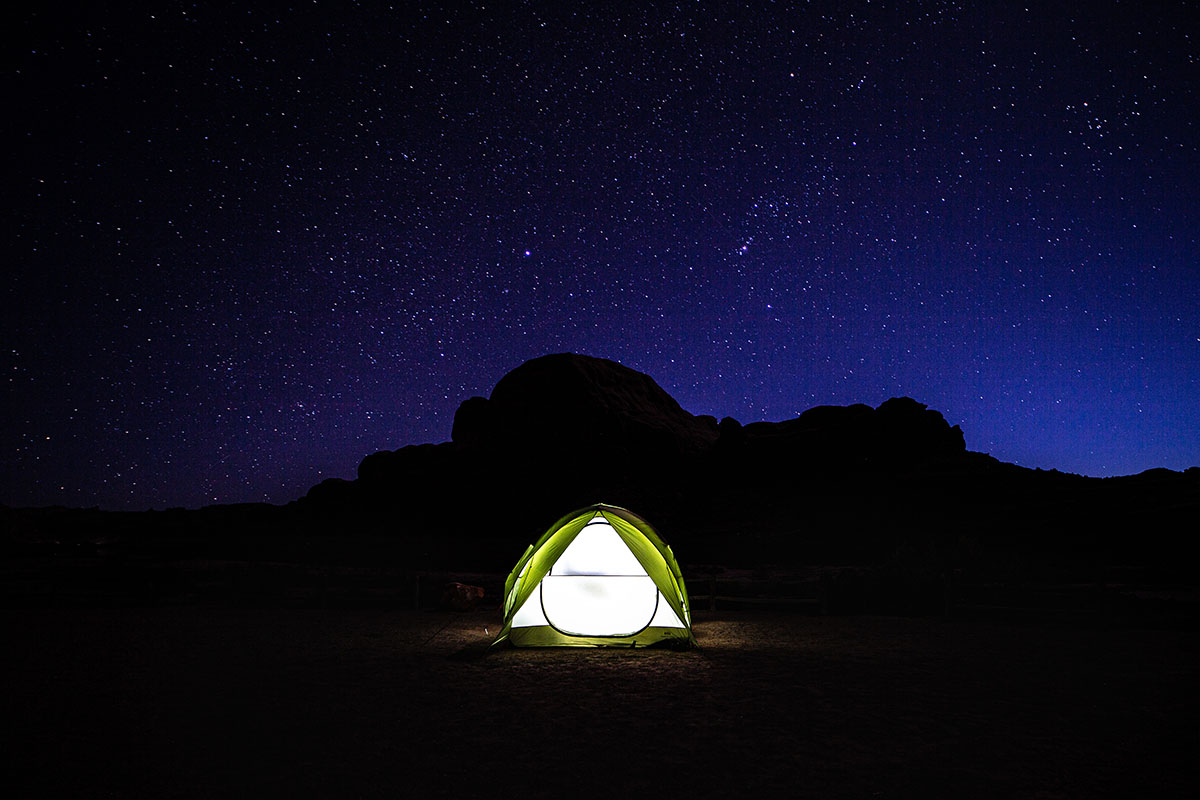
The first question to ask yourself when searching for a camping lantern is how much brightness you anticipate needing. Brightness is measured in lumens, and the lanterns above have max outputs ranging from 60 (the Goal Zero Crush Light Chroma) to a whopping 1,250 (the Coast EAL22). Most also have dimming capabilities and numerous modes that allow you to choose your level of brightness for any given situation—for example, LE's LED has four intensities, including a dimming option to keep the battery running longer. Finally, keep in mind that light diffusion can play a sizable role here—frosted globes like you get with the BioLite AlpenGlow 500 and Black Diamond’s offerings dilute the light a bit, but the trade-off is more enjoyable, even illumination around camp.
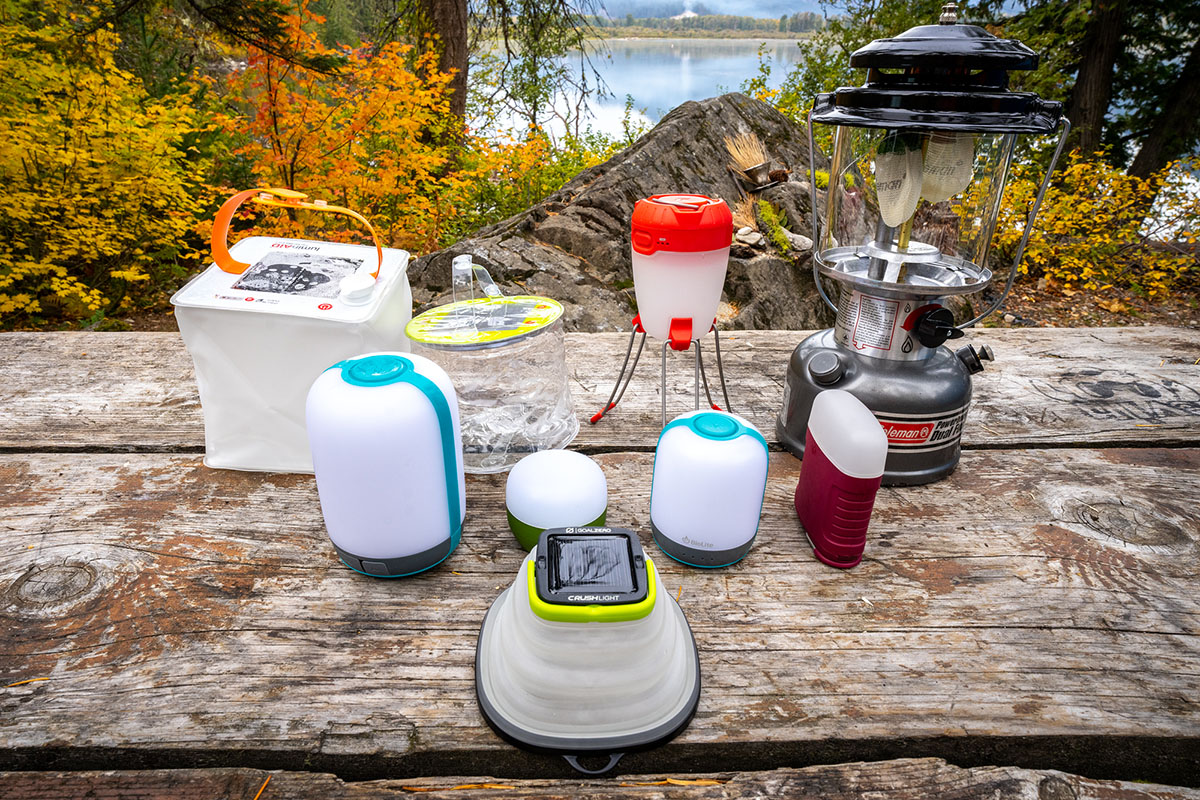
When deciding on the proper number of lumens, it's worth noting that you shouldn't plan on using your lantern’s maximum setting for extended stretches as it will drain the battery quickly. In general, we’ve found that 25-150 lumens are sufficient for general camping use and lighting smaller areas such as a picnic table or family-sized tent. Those in the 200-600 lumen range are great standalone options for lighting up entire campsites, which is a big reason we’ve ranked BioLite’s AlpenGlow 500 at the top of our list. At the high end are options with 1,000+ lumens like the aforementioned Coast EAL22 and LE LED Camping Lantern, which are exceptionally bright at full tilt but can be overkill and almost blinding on clear nights (they do have appeal for inclement weather when visibility is poor).
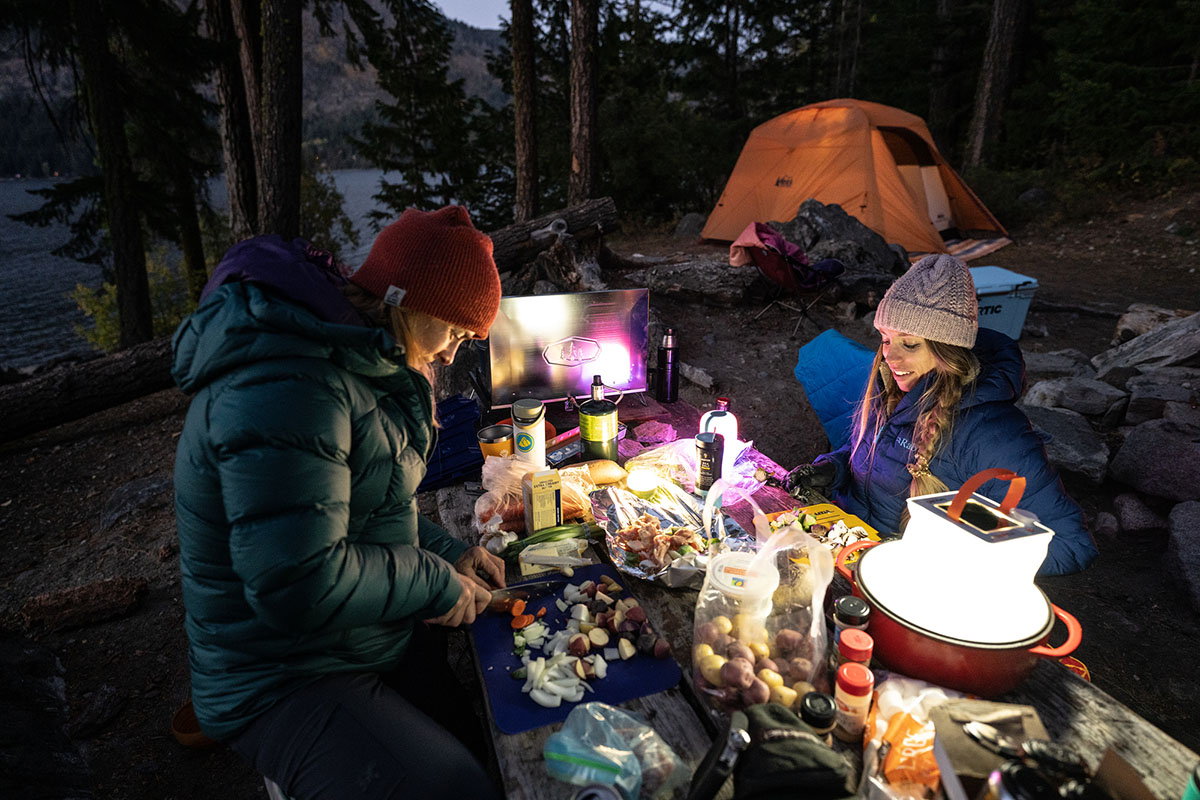
Most lanterns are powered by AA/AAA batteries or a USB-rechargeable battery. The latter have become more ubiquitous in the past few years and are our preferred style for their convenience and streamlined size. The biggest downside is that reviving a dead lantern isn’t as easy as swapping out AA or AAAs, meaning you’ll need to bring along a power bank or alternate method of charging if you’re planning to head off the grid for an extended period. You do pay more of a premium upfront for rechargeable batteries, but it’s important to remember that the cost and waste of AA/AAA batteries will add up over time. Finally, some lanterns offer the versatility of both a rechargeable battery and compatibility with AAs, which can be a great middle ground for those wanting the benefits of a rechargeable model but who anticipate going a long time without a power source on occasion.
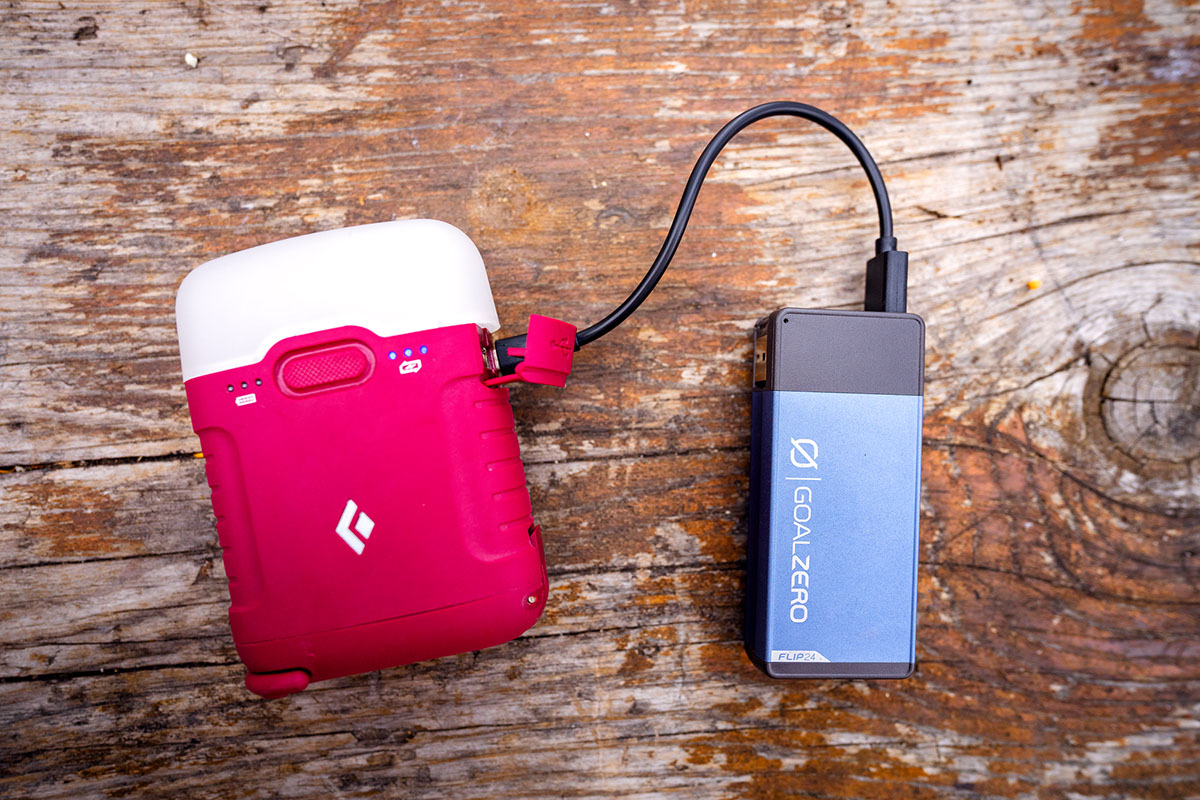
If you spend a lot of time camping in remote locations, it may be worth considering a USB-rechargeable lantern that’s also equipped with a built-in solar panel. Designs with this feature include the LuminAid PackLite Max, BioLite's Luci offerings, and Goal Zero’s Crush Light Chroma. Their Lighthouse 600 is also compatible with a solar panel—and boasts a helpful hand crank for manual recharging—although you’ll need to purchase it separately. Solar panels can be a convenient way to get added juice in the backcountry—simply leave your lantern out in the sun and wait—but there are some downsides. Namely, the solar panels on these units are fairly small and, therefore, take a long time to charge, especially if conditions aren’t ideal (even on lightly overcast days, you may run into power issues). In the end, they’re a nice supplementary option, but we advise bringing along another power source to expedite the recharging process via USB if possible.
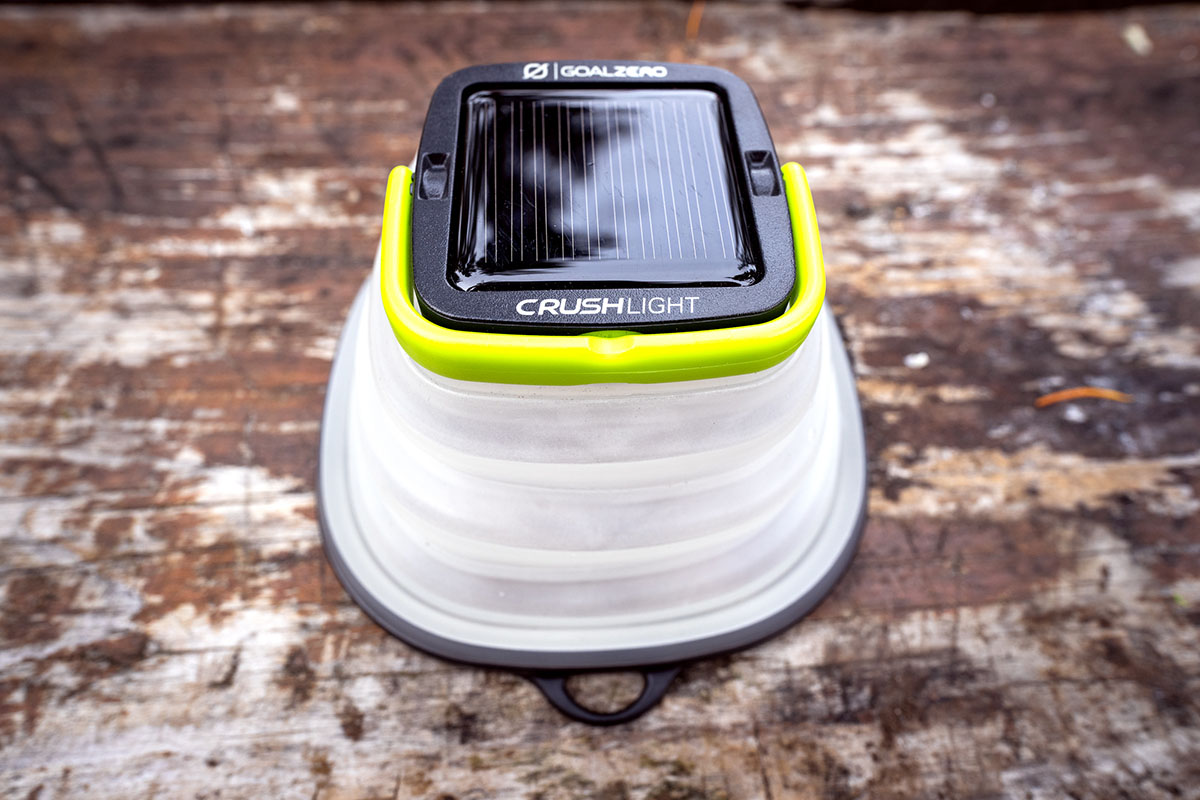
A final consideration when it comes to lantern batteries is the stated battery life or run time, which ranges from 2.5 hours for the Goal Zero Lighthouse 600 to 12 hours for the LE LED Camping Lantern. We’ve listed the advertised specs from the manufacturers in our comparison table above, but it’s important to note that the listed run time is for the highest-lumen setting and can vary considerably depending on output, weather conditions, and other factors (we treat these specs as a rough guideline for comparing models). For instance, our top-rated BioLite AlpenGlow 500 has an average run time of 5 hours on high and 200 hours on low, but most campers will likely get a lifespan somewhere in the middle by naturally cycling through the settings during a trip. Cold temperatures also tend to drain batteries more quickly, so it’s important to factor that in and bring along backups (or a method of charging) should you venture out in the winter or at higher altitudes. To maximize battery life, the best practice is to only utilize the amount of light you actually need and dim your lantern whenever possible.
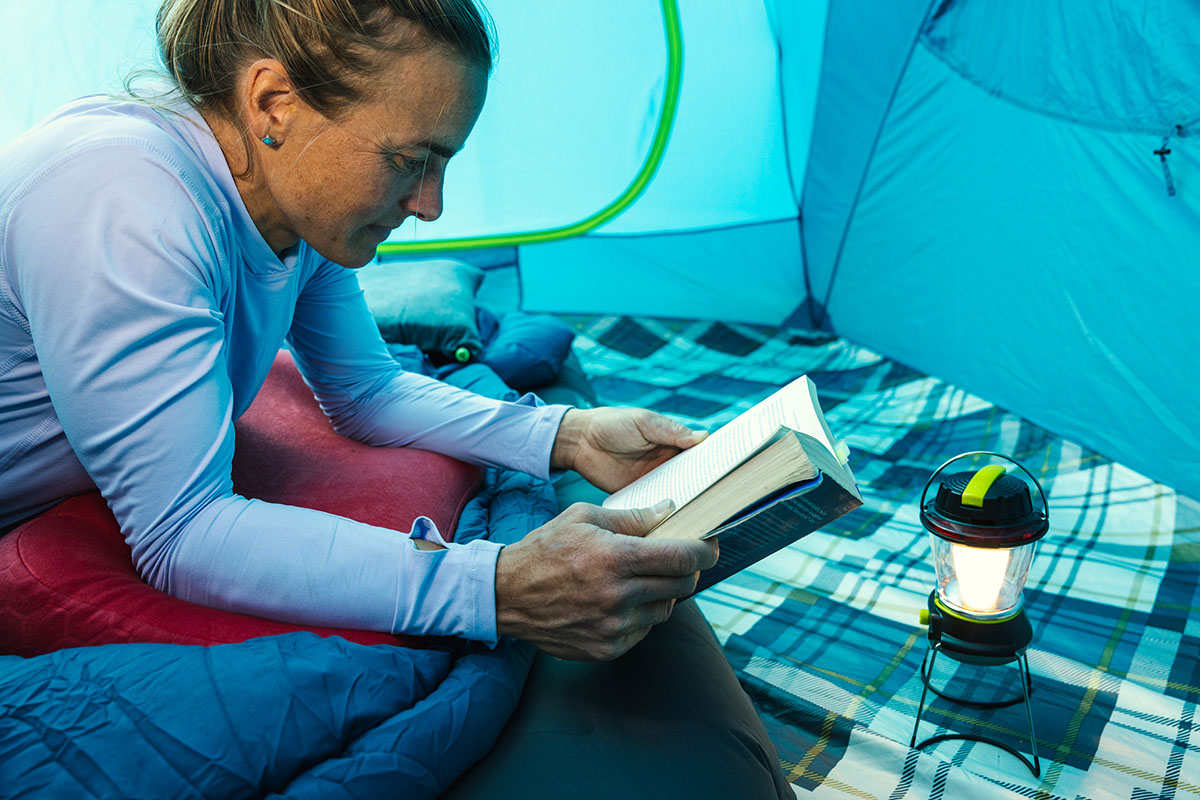
In addition to dimming capabilities and modes to adjust the intensity, many lanterns feature additional settings for customizing the ambiance at camp. BioLite’s AlpenGlow 500, for instance, has a flickering function and multiple color modes, including a fun rotating color option that cycles through various vibrant patterns. Goal Zero’s Crush Light Chroma is another standout with eight color modes, including a multicolor fade setting, while their Lighthouse Micro Flash has a helpful flashlight beam for more precise illumination while reading or using the bathroom at night. And Ledlenser’s ML6 includes settings like a “boost” function for max power in short spurts, interval-based blink and pulse options, a strobing capability for unexpected wildlife encounters, and even a built-in distress signal that emits SOS in Morse code. In the end, most campers will utilize the standard settings most often, but an array of other modes can be fun for customizing your campsite and creating a cozy atmosphere.
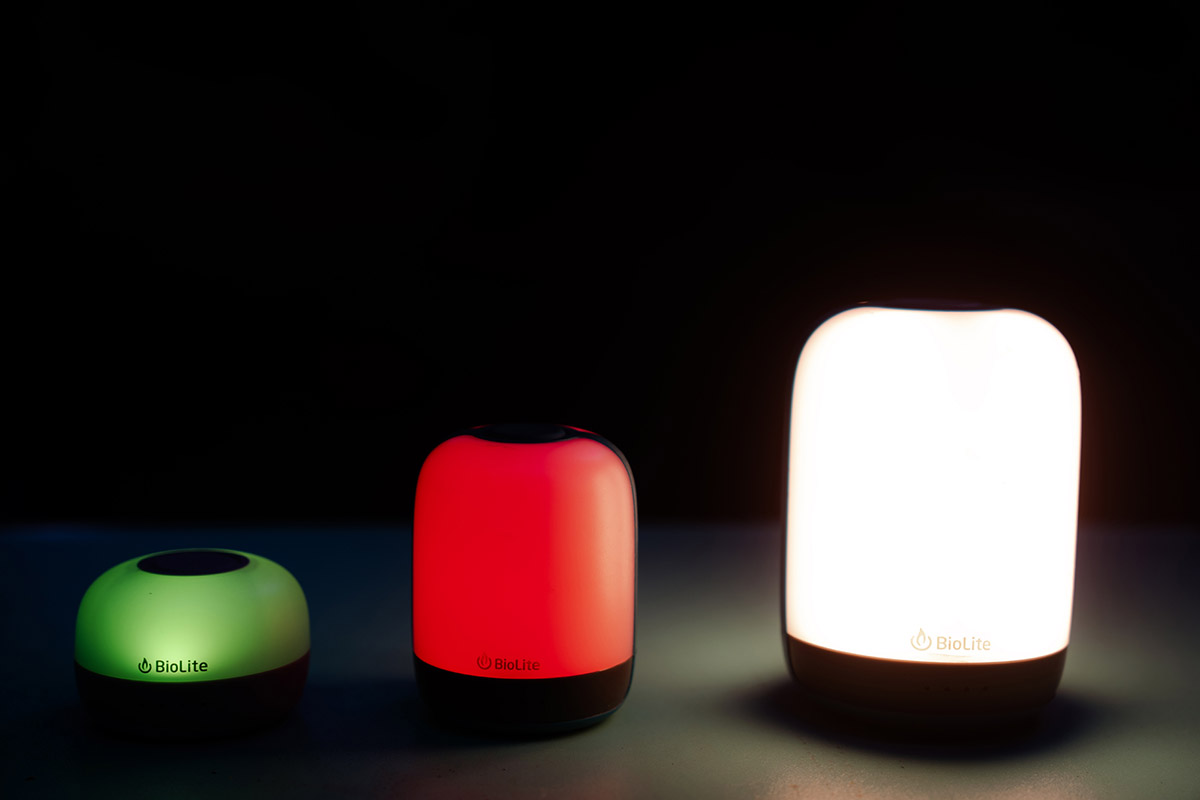
In addition to batteries, solar power, and rechargeable designs, there are still a handful of gas-powered options on the market. Due to their limited appeal for most recreational campers, we included just one of these models above (the Coleman Powerhouse Dual Fuel), but they do have utility for cold-weather outings and camping at higher altitudes. Traditional alkaline batteries tend to drain quickly in the cold, and while rechargeable lithium batteries are better performers and last longer, they’re still far less reliable than liquid fuel or gasoline in truly frigid temperatures. No matter what model you have, it’s a good idea to keep your lantern in a relatively warm place when it’s not in use—like inside your sleeping bag if you leave camp for the day.
Given the differences in designs and overall functionality, the weight spread is fairly large among camping lanterns. For reference, the lightest option on our list is Goal Zero’s minimalist Lighthouse Micro Flash Lantern (2.4 oz.), while Coleman’s gas-powered Dual Fuel clocks in at a hefty 4 pounds 10.4 ounces. Most designs fall somewhere in the middle, hovering between around 3 ounces and 1 pound, which we’ve found to be a reasonable weight for camping use when you’re likely not shuttling gear far from your vehicle. Even the hefty Coleman is light enough to carry to and from your car with ease.
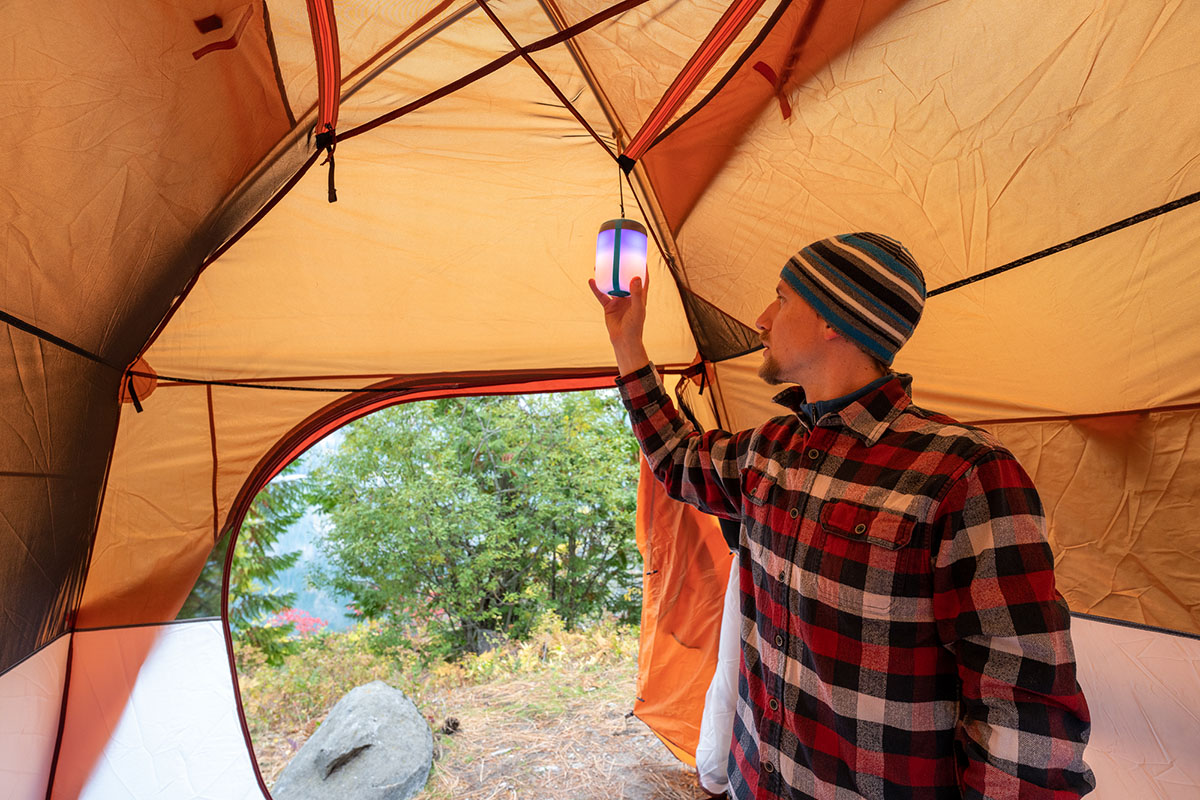
For many campers, and especially those with limited space in their trunk or garage, weight matters less than packability. Collapsible designs like LuminAid’s PackLite Max and BioLite's Luci Original Solar Inflatable Lantern are excellent options for those limited on space: They deflate quickly and easily when not in use and measure around 1 inch thick when compressed. The downside to these collapsible models is that they tend to be less robust and hardwearing than hard-sided options over the long term, but we’ve used both designs extensively and haven’t experienced any issues with punctures or tears to date.
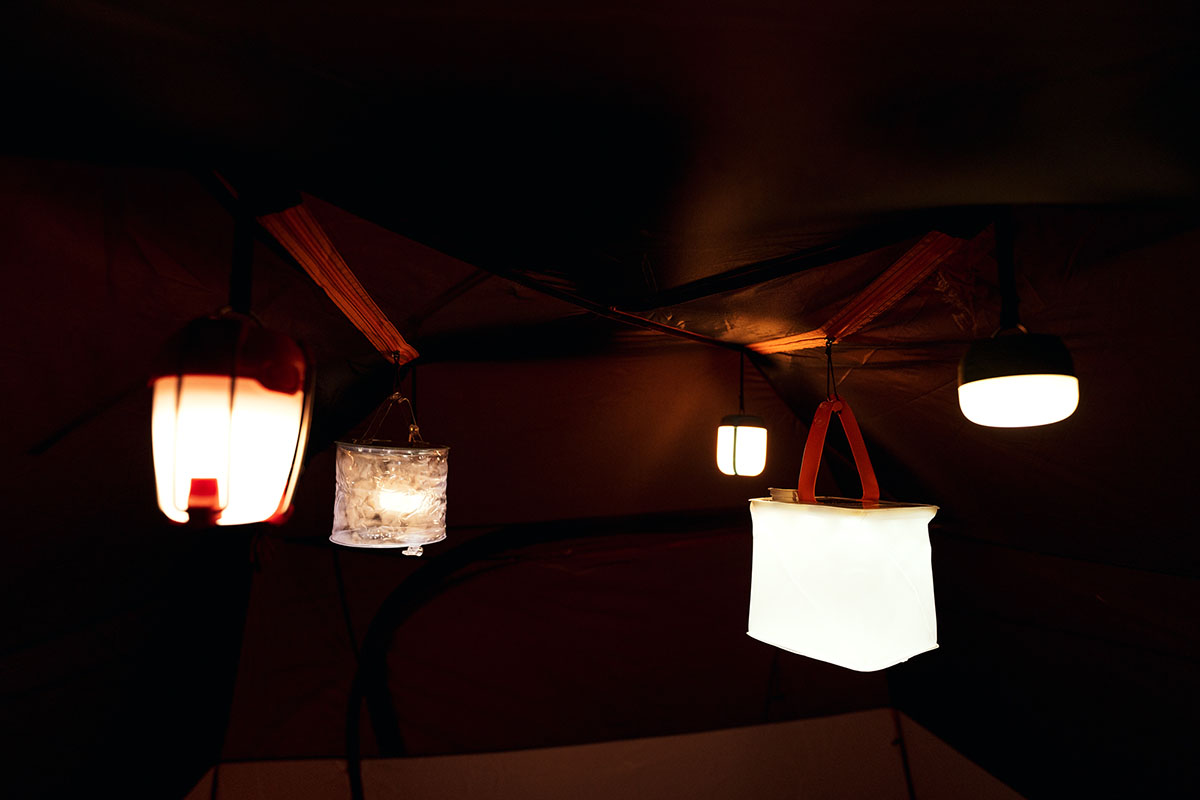
Most of the lanterns above are fully freestanding and can easily be propped up on even surfaces like a picnic or camping table. That said, many people like to hang their lantern from tree branches or webbing loops inside their tent, and we appreciate when they come with functional loops at the top for suspending in the air. Some designs are better executed than others: Black Diamond’s offerings are especially well designed with small, metal hooks at the top that make them easy to hang nearly anywhere. LuminAid’s PackLite Max and BioLite's Luci Original, on the other hand, have fairly thick and bulky straps that can be tougher to suspend inside a tent (we had to get creative by utilizing the zipper pulls inside our camping tent rather than the thin webbing loops). They’re also not secure enough for strapping to the outside of a pack or duffel on the way in.
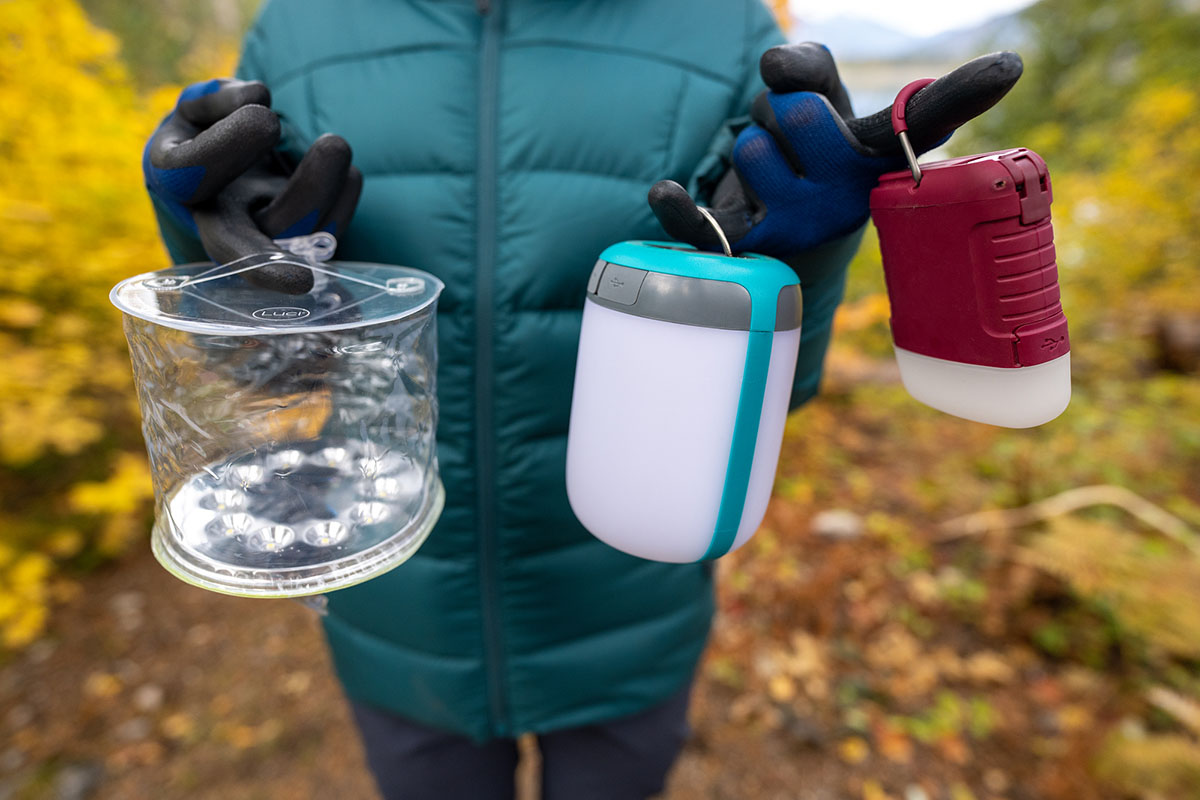
Some lanterns also come equipped with deployable legs for added stability on uneven surfaces, including Black Diamond’s Orbiter 650 and Goal Zero’s Lighthouse 600. Ledlenser’s ML6 is another standout in this category with a variety of mounting options: You can use the rubber hook at the top for hanging, the integrated magnet for sticking to a metal surface, or the removable stand for propping up on a table or rock. We call out any stability-related issues in the write-ups above, but in the end, a final decision will come down to a matter of personal preference and how you plan to utilize your lantern at camp.
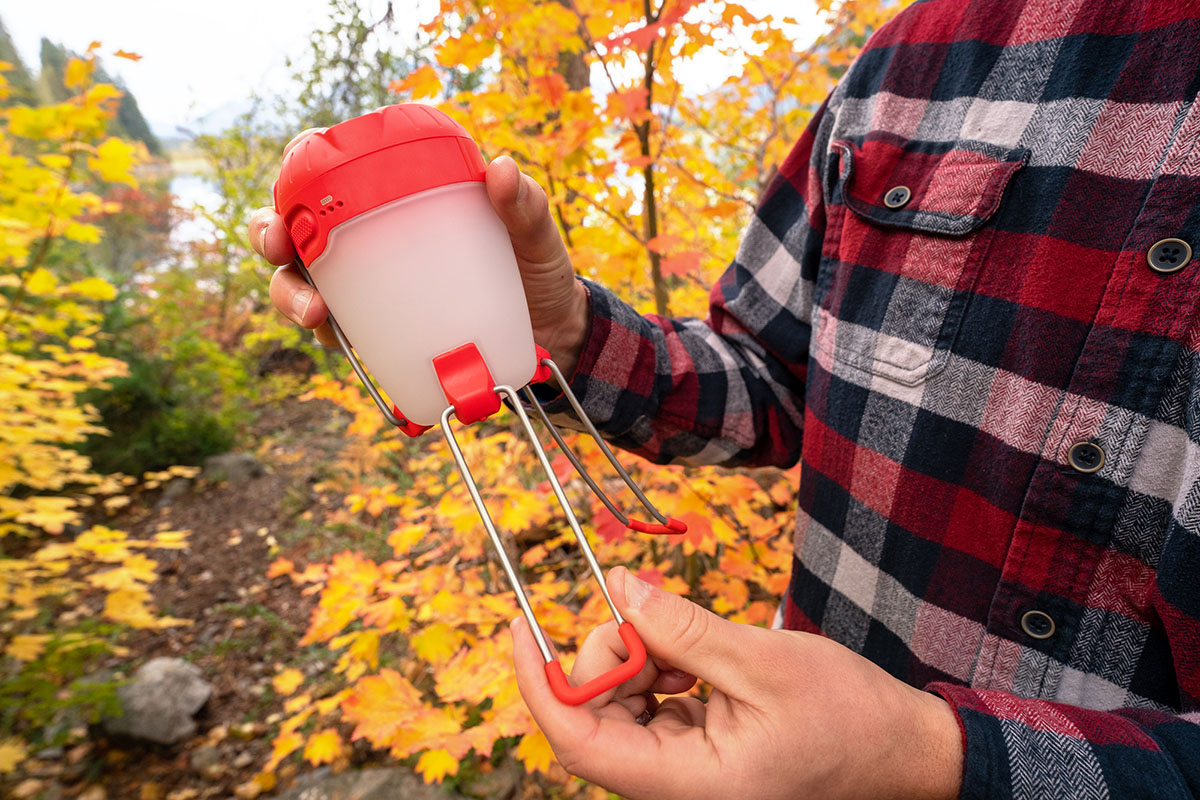
Modern camping lanterns are a fun bunch, with many of the designs above boasting unique tech features for added convenience when you’re off the grid. Two of the most popular are built-in solar panels (covered above) and USB charging ports. The former is an excellent addition for supplementary power in the backcountry—simply leave your lantern out in direct sunlight for the day to get added juice. USB ports make it easy to recharge your phone or other electronic devices in the field, but they realistically only provide a moderate benefit. Using this function can drain your lantern’s battery quickly, and we recommend bringing along a separate power bank if you anticipate being out for an extended stretch.
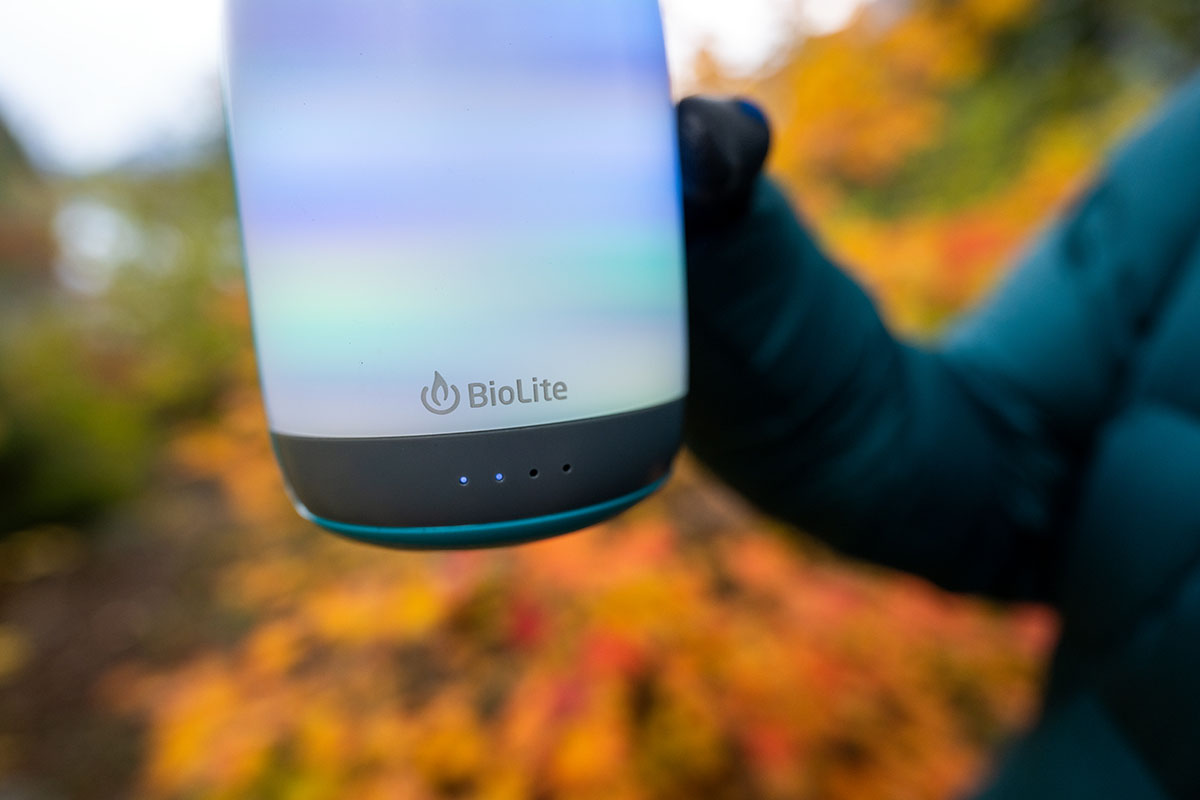
Some designs—like Ledlenser’s ML6 Connect—are also Bluetooth-compatible, allowing you to control the settings via an app on your phone. This makes it incredibly quick and easy to alternate between lighting modes, check battery levels, and personalize the settings to fit your preferences. You can expect to pay a pretty penny for the added technology (the ML6 Connect costs around $100 on Amazon at the time of publishing), but it may be worth it for tech-savvy users who like to geek out on their gear.
For serious outdoor use and extended exposure to the elements, you may want to consider the weather resistance of your camping lantern, which is tested using the IP ratings scale. On the low end, IPX0 equates to no protection at all, while IPX8 at the high end means the item can sustain prolonged immersion. Most of the options on our list fall somewhere in the middle and can withstand sustained precipitation but will succumb to prolonged and heavy exposure. For example, BioLite's Luci Original comes with an IP67 rating, which means it can handle being dropped in water up to 1 meter deep for half an hour, while the Black Diamond Orbiter 650 and Moji (IPX4) are only rated for protection against splashing water rather than full immersion.
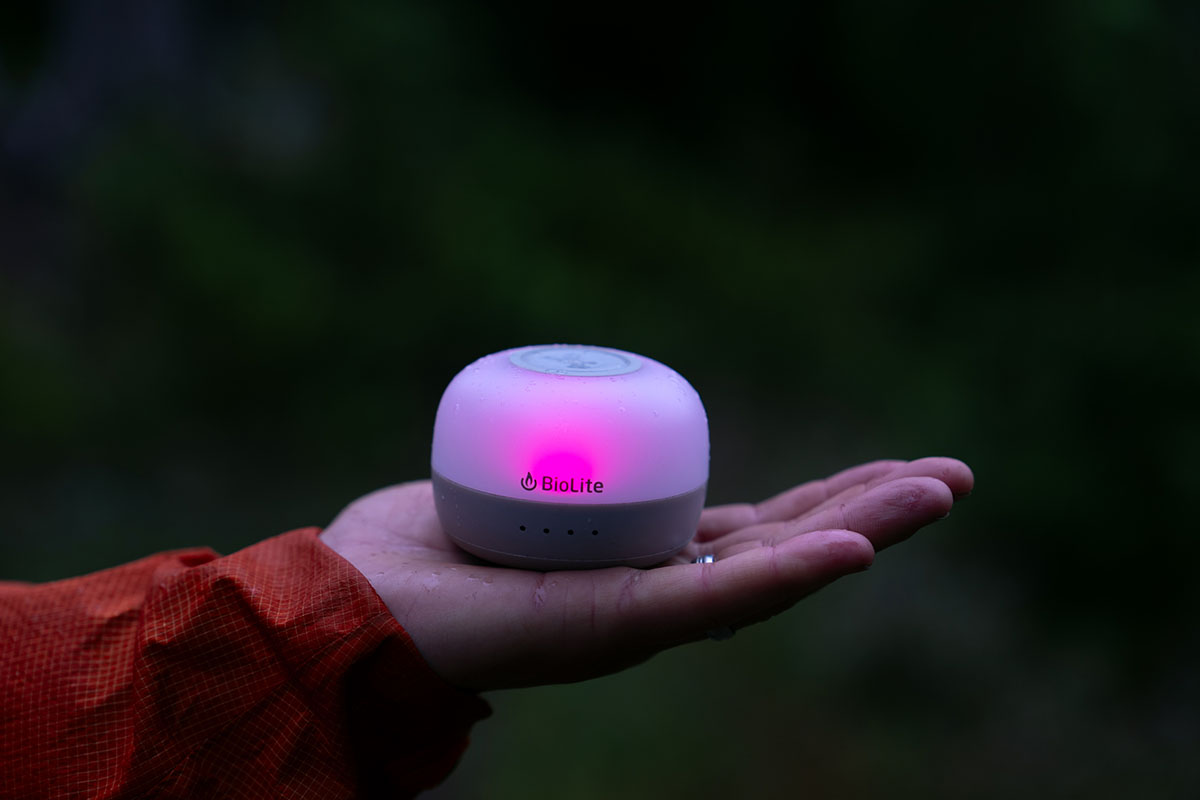
Most manufacturers provide an IP rating in the product specs, and a quick Google search should help clarify how well-equipped a given lantern is for sustained exposure. The bottom line is that if you plan on spending time exposed to the elements, check the IP rating of your lantern before buying. If you only anticipate camping in fair weather conditions (which is a large portion of users), it may not be a deciding factor at all, but added protection and assurance are certainly never a bad thing.
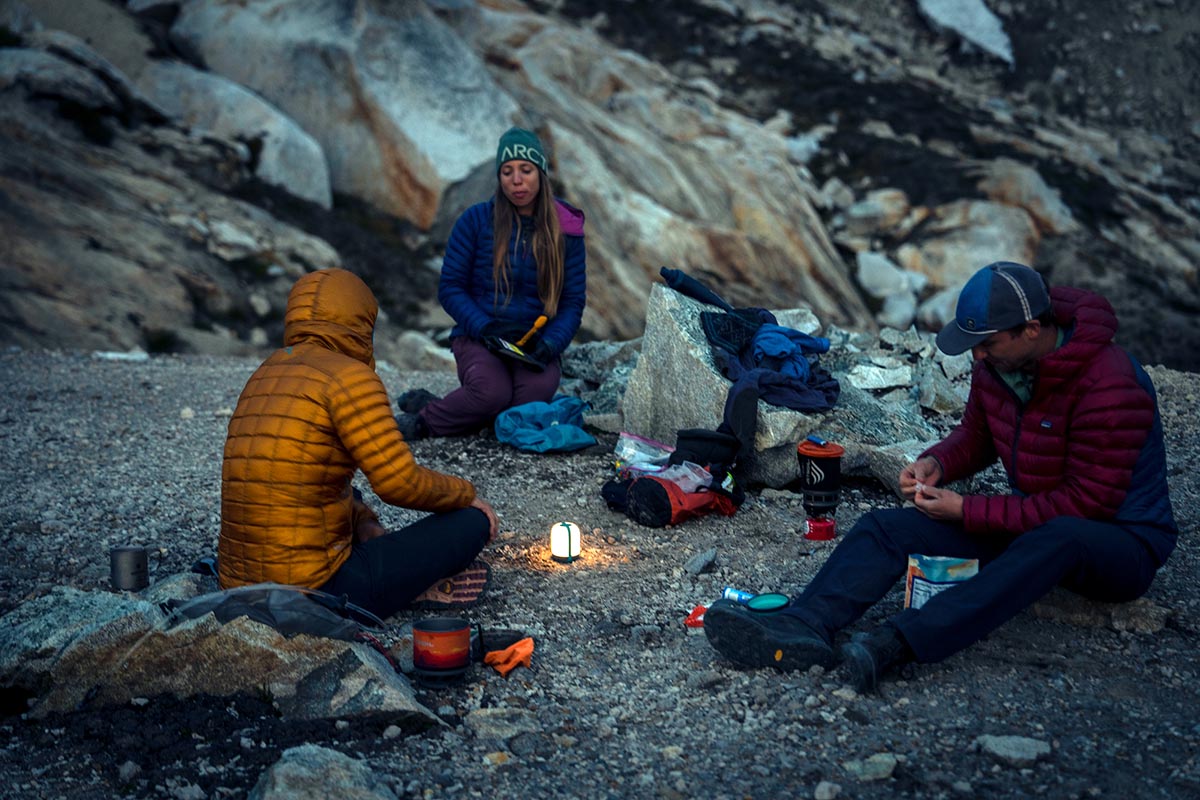
Lanterns are the most ubiquitous form of camp lighting, but there are several other fun and unique alternatives worth mentioning. Our favorite is BioLite's Luci 44' Solar String Lights listed above, which create a cozy, intimate setting at camp and come with all the requisite features for regular outdoor use, including a built-in solar panel for recharging, a USB port for powering electronics, and good weather resistance. Revel Gear makes another quality design in their Trail Hound string lights, although they don’t have a built-in battery and must be connected to a power source. A couple of other fun alternatives are BioLite’s Luci Site Lights, which boast six “nodes” that can be separated or strung together, and BioLite’s SiteLight String, a daisy-chained lighting system that can be powered by a BioLite lantern or any USB power source. These designs lack the versatility of standard lanterns, but they can be a fun supplementary option for those who get out a lot and like to customize the atmosphere at camp.
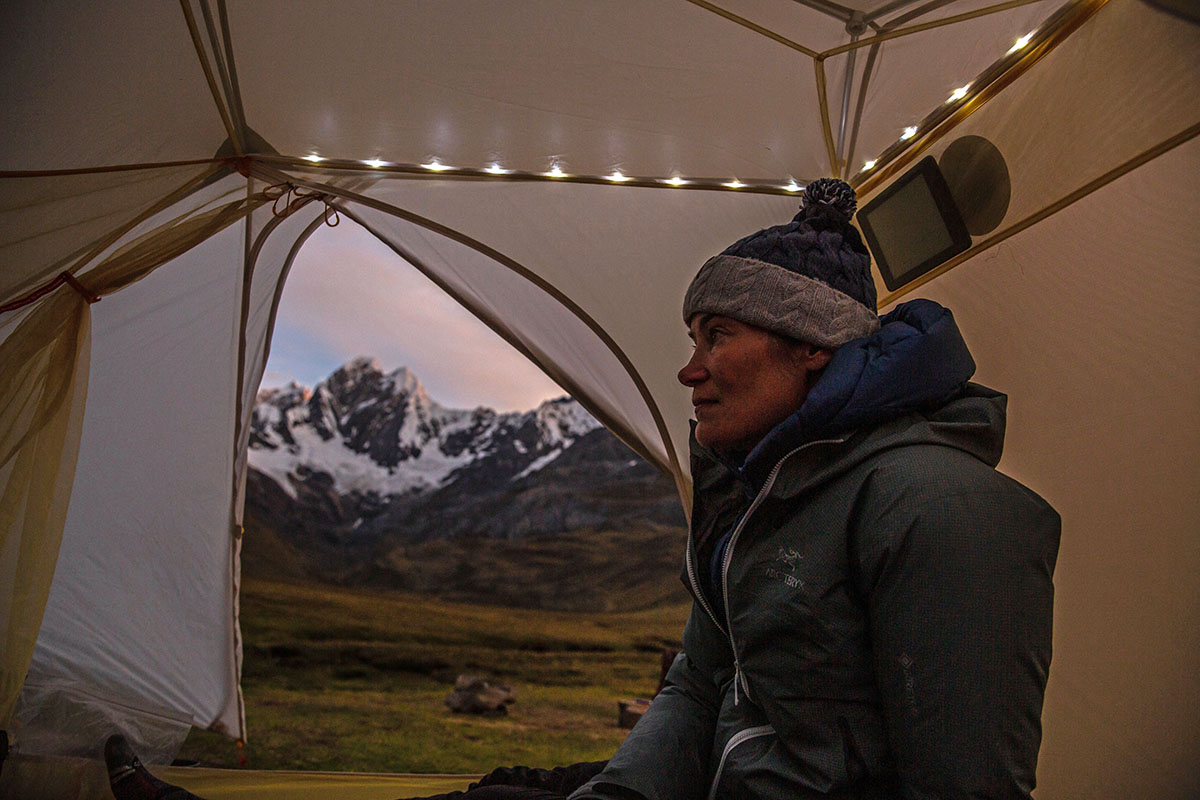
Right off the bat, we’ll note that lanterns are largely used for car camping, and backpackers typically rely exclusively on headlamps (covered below) for illumination on the trail and at camp. That said, some of the designs above are perfectly viable for bringing into the backcountry, and especially on longer group outings when you plan to set up a larger basecamp. The primary focus here is on weight and packability, as hauling gear miles into the wilderness can be quite effortful. Some of our top picks include Goal Zero’s diminutive Lighthouse Micro Flash Lantern and deflatable designs like LuminAid’s PackLite Max, Goal Zero’s Crush Light Chroma, and BioLite's Luci Original, which also sport solar panels for off-grid recharging. In the end, lanterns are an extra piece of gear and not worth the added weight for many backpackers, but they can be a fun addition on certain trips.
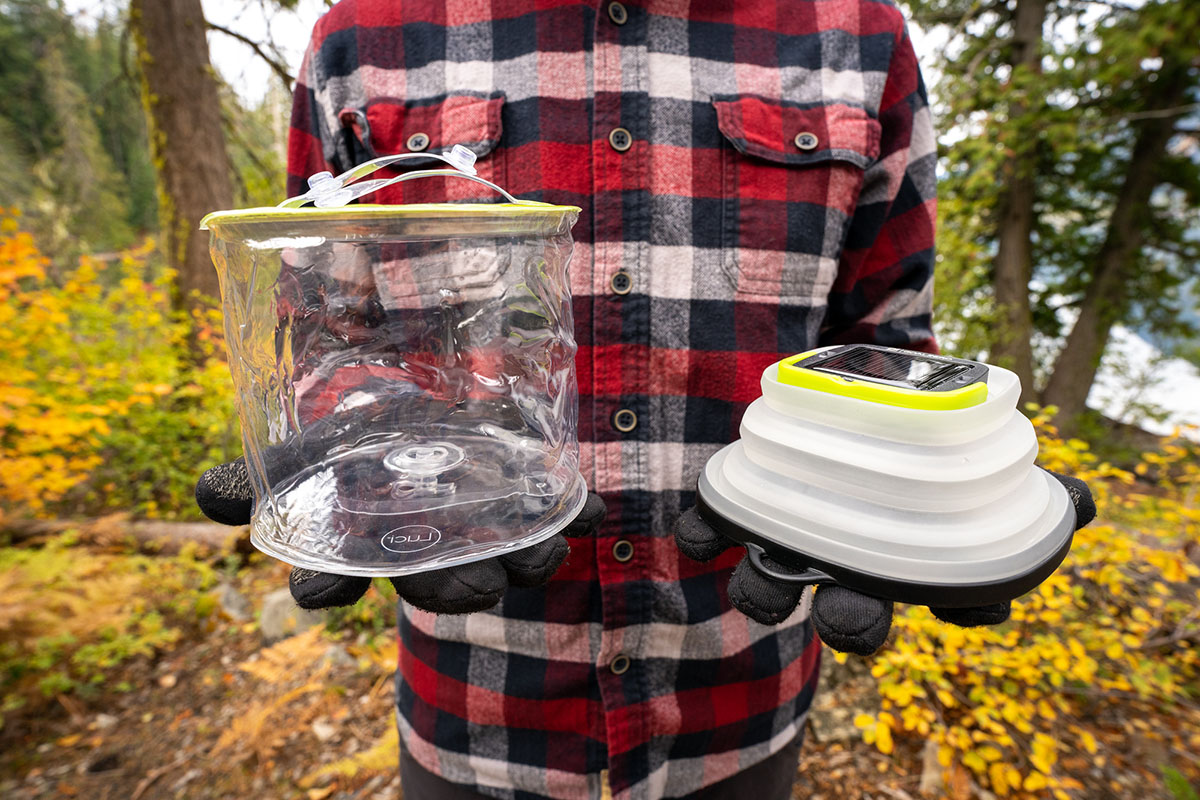
As we touched on above, backpackers traveling miles into the backcountry with all their gear typically utilize headlamps for illumination. Compared to lanterns, headlamps are generally brighter and boast more precise beams for navigation in full darkness. They’re also considerably lighter and more compact overall. The downside is that they don’t offer the wide, dispersed light of lanterns for illuminating an entire campsite, although we’ve found that placing our headlamp in an empty Nalgene water bottle creates a similar effect. In the end, headlamps and lanterns both have their place, and what you bring along will largely depend on your objective. For a deeper dive into the headlamp market, see our article on the best headlamps.
Back to Our Top Camping Lantern Picks Back to Our Lantern Comparison Table